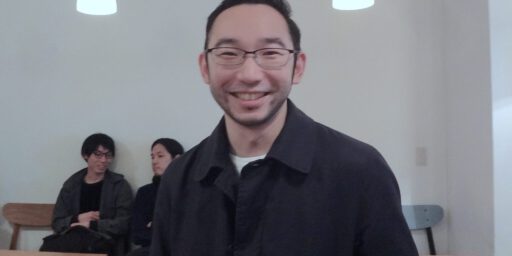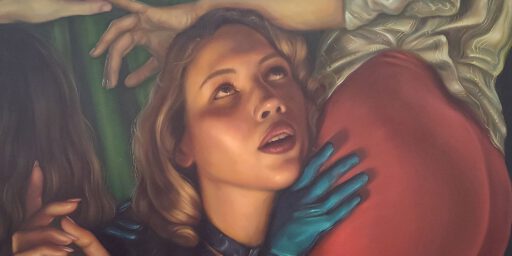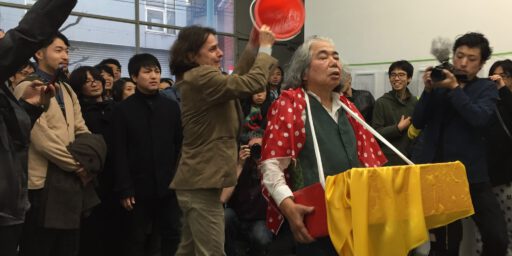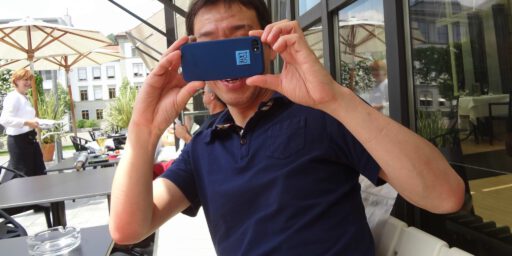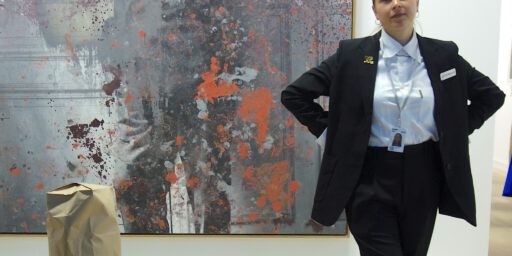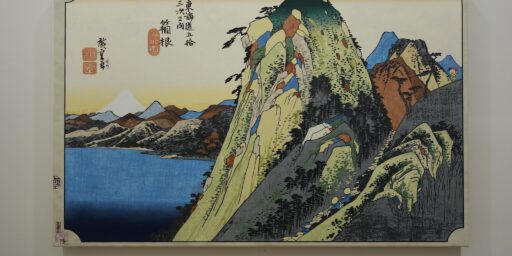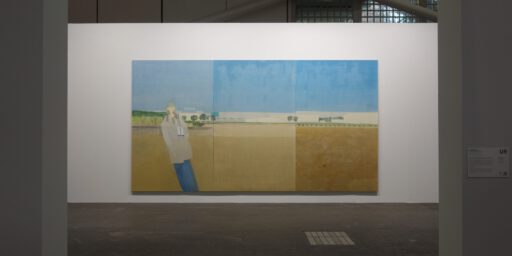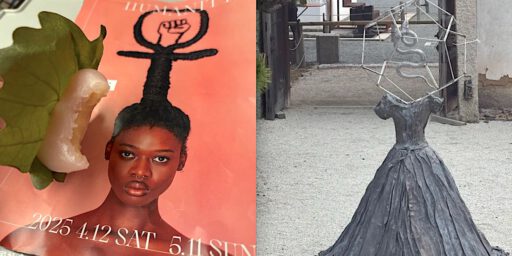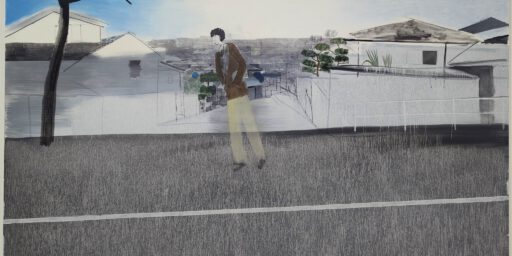A New Art Star is Born: TOMOZAWA Kotao. Spiritual Transfiguration Oil Paintings @ Seibu Department Store, Shibuya 新日本現代アート・スター 油絵画家 友沢こたお
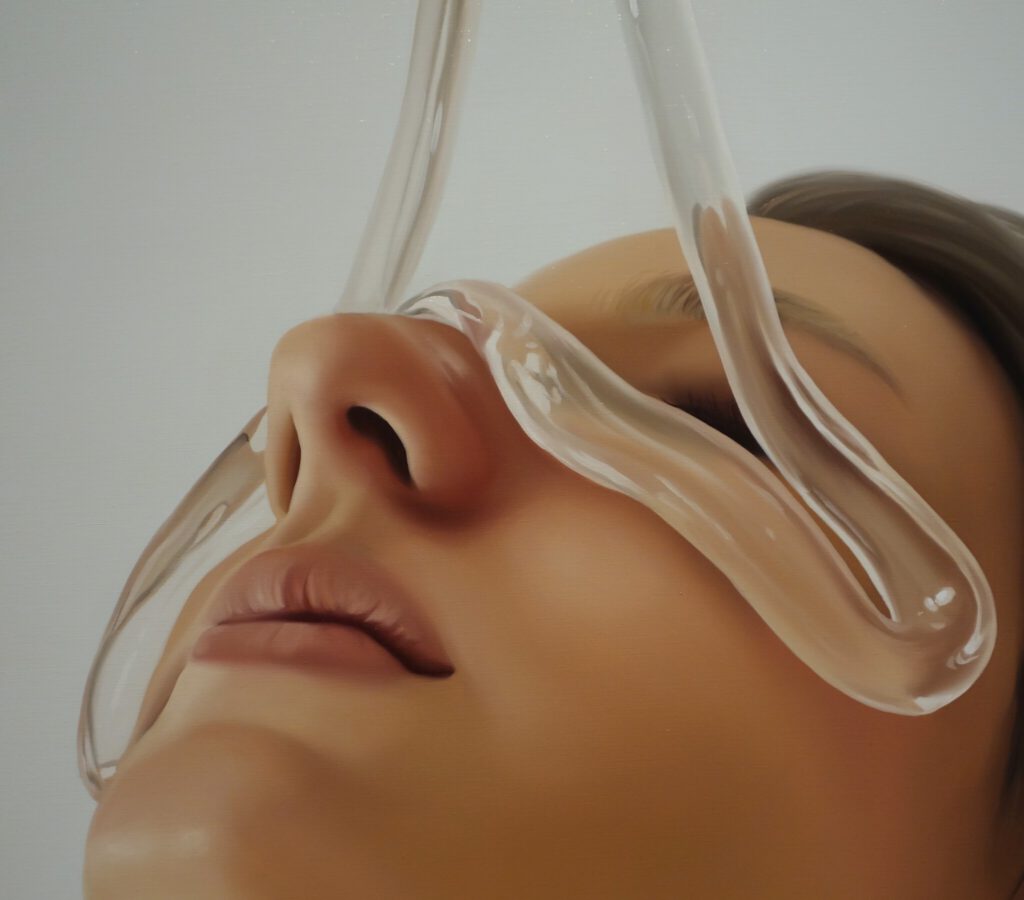
Attention. When I visited the Seibu department store in Shibuya last December 2023, to see for the first time 友沢こたお TOMOZAWA Kotao’s oil paintings in a solo show, out of curiosity and “technical check” as an oil painter, I never expected to encounter an exemplary case of “Art Flipping” in the Japanese contemporary art world.
On 11th of January 2024, because the exhibition at the Seibu department store was still ongoing, a first draft had been published here on ART+CULTURE. With the same title: “A New Art Star is Born: TOMOZAWA Kotao…”. Explaining, that the editing is not yet finished and up-dates will follow.
Recapitulating, I was too naive, idealistic and without proper research.
My website ART+CULTURE is influential in the Japanese art world. It can decide the vector of the artist’s career.
Since January, after encountering more works by Tomozawa in natura, getting thrice real-time auction results (with suspected, anticipating numbers as a veteran connoisseur), seeing her works in the Museum of Contemporary Art, Tokyo (MOT), at the Art Fair Tokyo, in a restaurant, in collectors’ homes and public exhibitions, I had to re-write and re-edit my text.
Now we have May 2024.
Tomozawa finished last month her arty studies at the university (whatever that means).
During these 5 months, I could watch, silently from the sideline, her personal development, dig more into her personal life through her mother 友沢ミミヨ TOMOZAWA Mimiyo, her agents, her galleries and management personal. Fascinating but also scary to see the evolutionary creative and “quick commercial” process, in the context of “BOOM+BUST-emerging artists”, of young 24 years old Kotao, as I know what it means to be an artist, who will live and create works until the age of 100.
The more I contemplate in front of 友沢こたお TOMOZAWA Kotao’s huge self-portraits, the more I discover her yearning to transcend into a universe of fetishism and mystical beauty.
I can sense her subtle transformation from acting as a kawaii “Chika-Idol” KOTORI Kotao 可愛い地下アイドル 小鳥こたお, “Half-JK-Bishojo-Idol” ハーフJK美少女アイドル towards the appeal of becoming a desirable, adult woman.

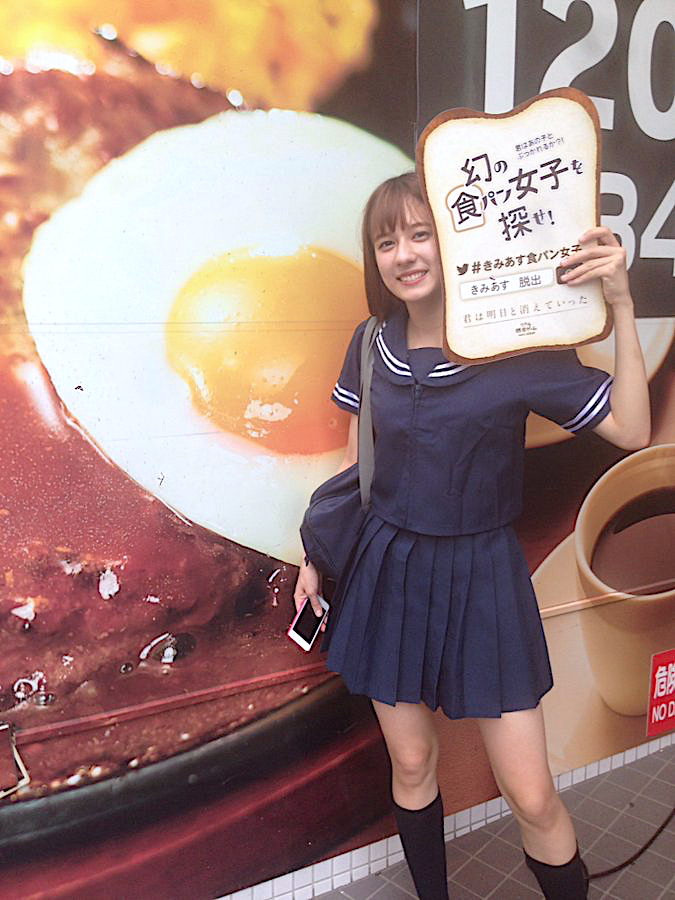
Link_https://www.youtube.com/watch?v=ChVu1OXGad0
あヴぁんだんど 「ヴぁんでぃっつ!!!」MV Full
Link_https://www.youtube.com/watch?v=O36k3ZLBIqw
あヴぁんだんど 小鳥こたお卒業ライブ
Link_https://www.youtube.com/watch?v=QwXdKRoW7QU
小鳥こたお (あヴぁんだんど) 「インスタ界で話題!”ハーフJK美少女アイドル”に密着」2017.05.20 OA
小鳥こたお(あヴぁんだんど)
quote 引用:
――今後のあヴぁんだんどの予定と、ご自身の目標などを教えてください。
曲を増やして、まだまだ色々な楽しいことにチャレンジしていく予定です!! 私は歌うことが好きなので、表現力を磨きたいです。私は、ぼんやりしていたり、心が弱いところがあったりするので、そのへんを鍛えて、いつかNicki Minajみたいになりたいです。これからもあヴぁんだんどから目を離さないで下さいね!!! 愛してま~~す!
https://dot.asahi.com/articles/-/25217?page=1
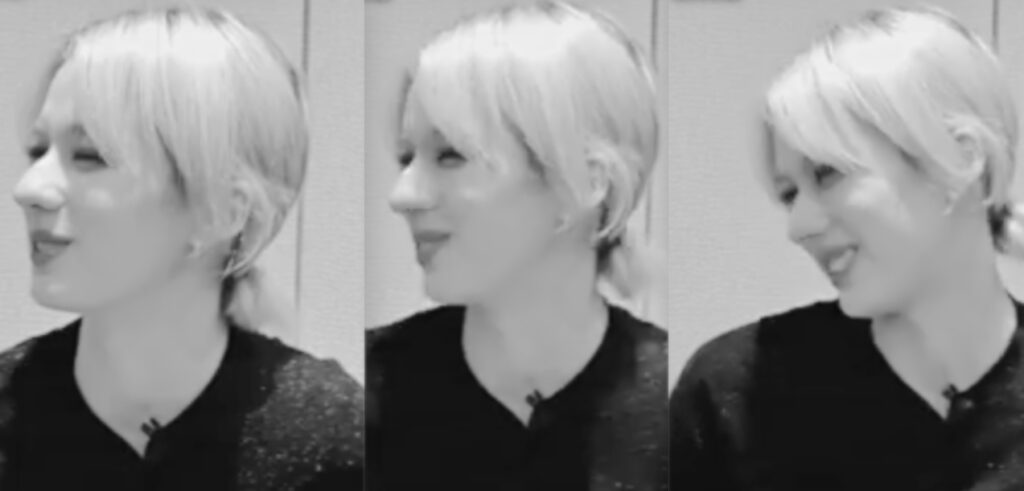
Freezing her protected youth with a half naked body on canvas, letting the viewer feel her sexually controlled vulnerability. This kind of artistic performative practice by her with slime attracts my attention, not only as an oil painter but as a man.
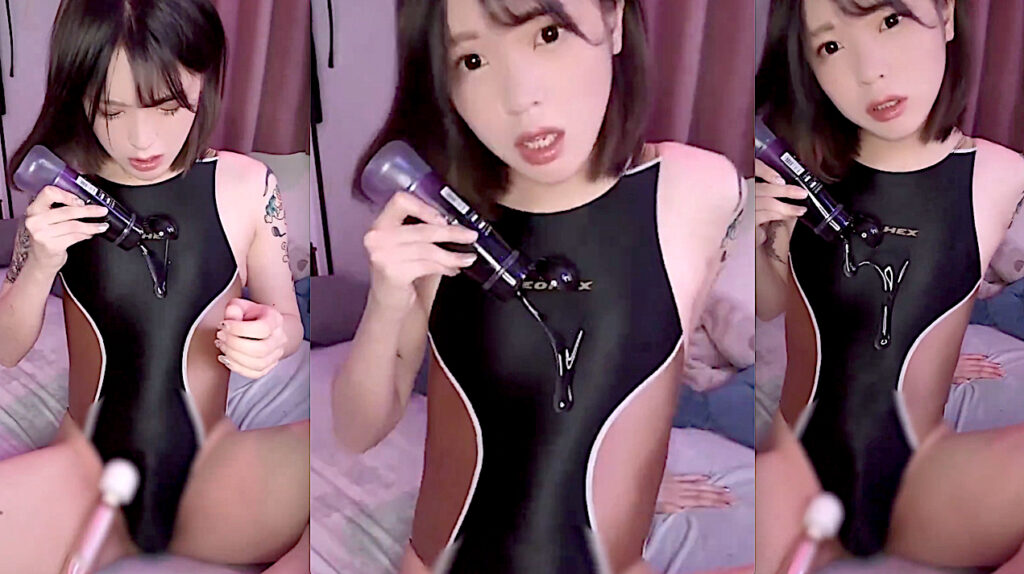
Link_https://twitter.com/s_wpp7/status/1760672459664285739
To understand Tomozawa’s background, obviously her well-known mother 友沢ミミヨ TOMOZAWA Mimiyo, artist and illustrator, comes to mind.

I would like to emphasise the culturally important, reciprocal (inter-) relationship between TOMOZAWA Mimiyo and Nakano-Broadway’s TACO ché タコシェ.
Let me first quote my text about colleague Trevor Brown, who’s works are strongly connected with TACO ché.
“One of the most famous contemporary artists from Japan, Trevor Brown トレヴァー・ブラウン, has actually an extremely popular & commercially successful exhibition, called “la nursery noire”, in Tokyo’s cultural center Shibuya.
Being one of his first collectors in the 1990’s, Trevor continues to execute superb, visually provoking, oil paintings by not only re-contextualizing the Japanese anime/manga/otaku subculture but proactively giving this subculture its “art direction” and “artistic vector” regarding evolutionary ero-guro-kawaii-movements, the goth-loli-fashion and the relating music and theatre/art performance industry. Since the 1990’s, Trevor Brown plays an important, central role in the Japanese art scene. (Later, Takashi Murakami 村上隆, Mr. ミスター and Yoshitomo Nara 奈良美智 “following/copying” part of his artistic practice/context, catapulted ‘fetishism fine art’ into the Japanese main stream culture.) Trevor’s existence and aura in the global subculture-related art world consequently can be called already: – “historical“.
(In this sense, I may hereby take the opportunity to say that I’m very proud of his Gesamtkunstwerk until today, – while being a colleague and a friend of him and his charming Japanese wife.)
Since the early stage of our careers, we live in the same beloved neighbourhood in Tokyo’s Asagaya and nearby Nakano-Broadway (TACO ché タコシェ). May I humbly mention, that we are continuing (or try to continue) to influence an important part of this nucleus of Japanese contemporary art + culture.”
more @
人気のある「日本アーティスト」 トレヴァー・ブラウン個展「la nursery noire」
Popular solo exhibition by ‘Japanese artist’ Trevor Brown “la nursery noire”
https://art-culture.world/articles/trevor-brown/
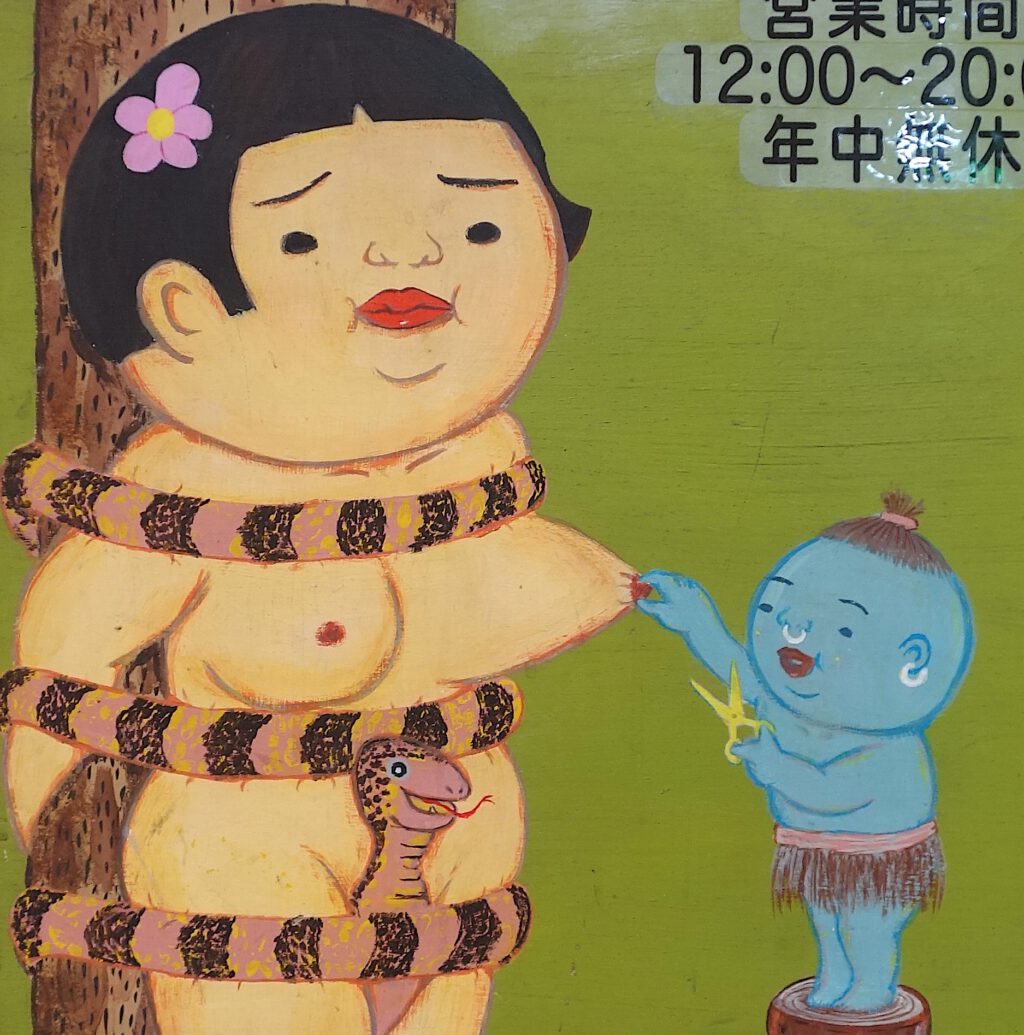
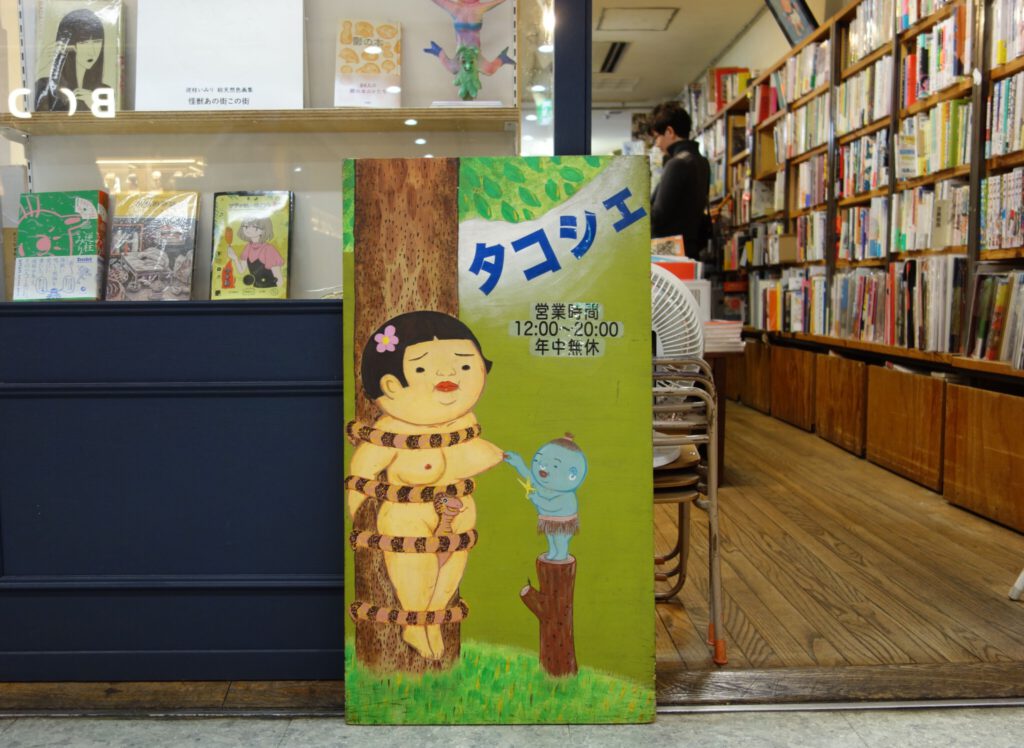
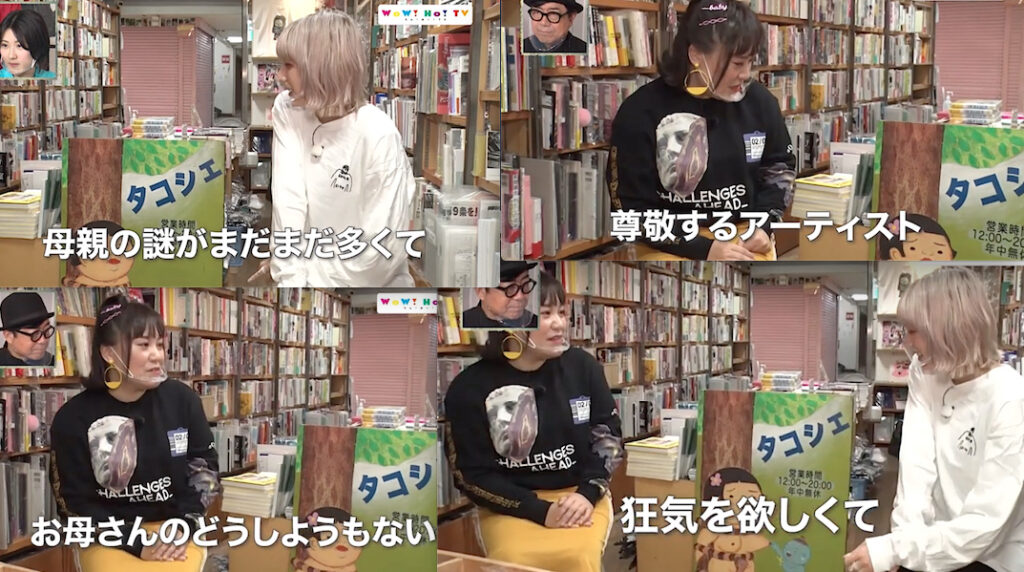
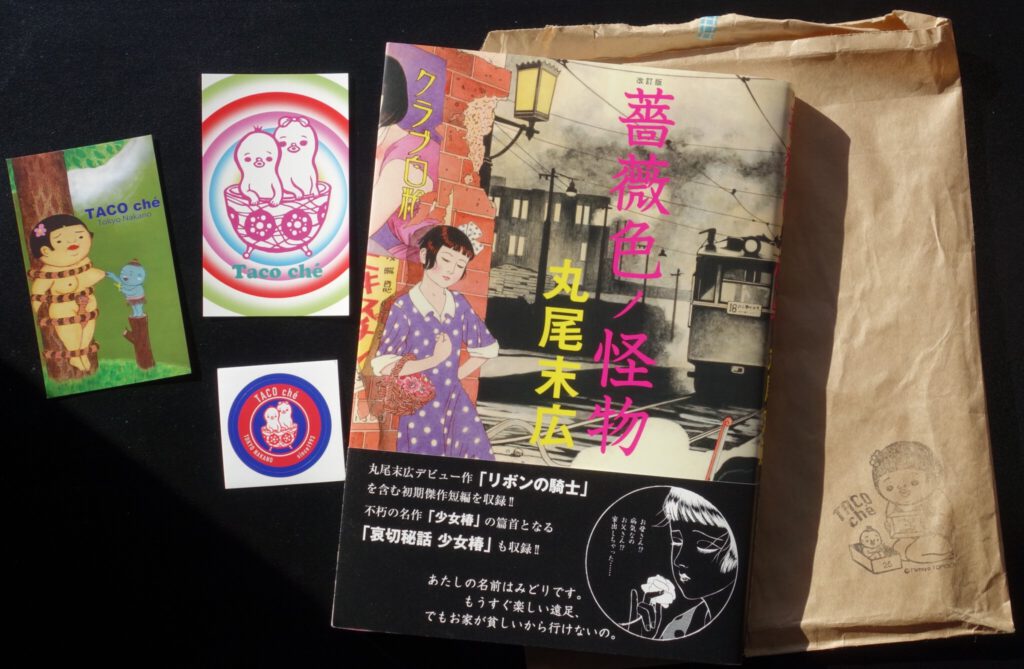
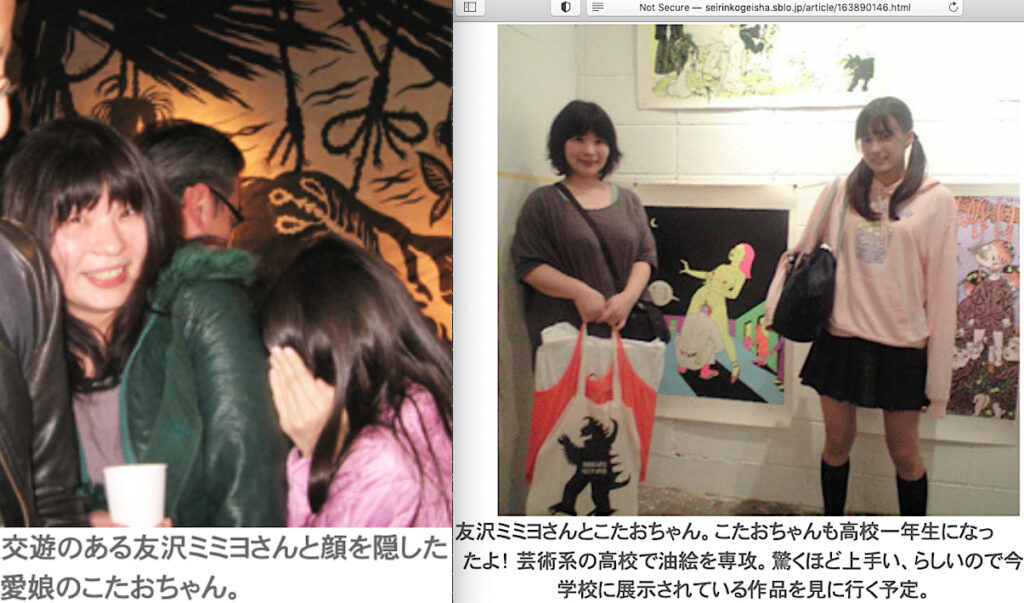

Astonishingly, myself feels a stronger artistic affinity with mother Mimiyo than with regard to her daughter Kotao. Mimiyo suggests a certain typical Japanese “Hentai-sei” 変態性 ((sexual) perversion), which I can very much relate to.
However, especially in today’s case of ART+CULTURE, the starting point towards my focus on Kotao was her artistic practice as a serious colleague-oil-painter.
As the late art critic NAGOYA Satoru called me “Mario A, one of the most brilliantly gifted–or perhaps I should say, the single most brilliantly gifted––oil painting artist in Japan”, I’m constantly looking for good ‘rivals’, who can catch up with my oil painting style. At my age of 65, I honestly wish to find someone who can follow into my steps as a respected, far-reaching, exceptional, challenging, over-the-top oil painter in Japan. Couldn’t still find that person.
The reason why my interest in mother Mimiyo is so strong, lies in the above mentioning of the ‘institution’ “TACO ché” in Nakano-Broadway. Our brain, fetishism fantasies are similar. Our heart beats with the same cultural frequencies. These erotic vibrations are an important, crucial part of our cultural heritage here in Japan. Mimiyo and me understand this atmosphere 空気 (Kuu-ki) without any further explanations. Whereas Kotao is still on her search to the inner self. When young, she was forbidden to read her mother’s erotic laden books. Too many mysteries about her mother exist, which Kotao can’t grasp. In a more adult context, myself understands attractive Mimiyo’s world, in an affirmativ way, perfectly. Life is boring. Mimiyo had the guts to let her works, with the help of TACO ché, let behind and start a new chapter in France. Through love and affection, Kotao has been born.
With these many relational aesthetics, I am very much looking forward to the evolutionary process of Kotao’s artistic practice in the coming years. Will she emancipate and coming out more freely? Or will she try to be part of Japanese social conformism? Reevaluating the body of works created when young. How will she succeed in cultivating her narrative at the age of 30, 50 or 75?
In general, Japanese audiences like to watch a young woman in the creative industry who feels unsure, lacks of self-confidence.
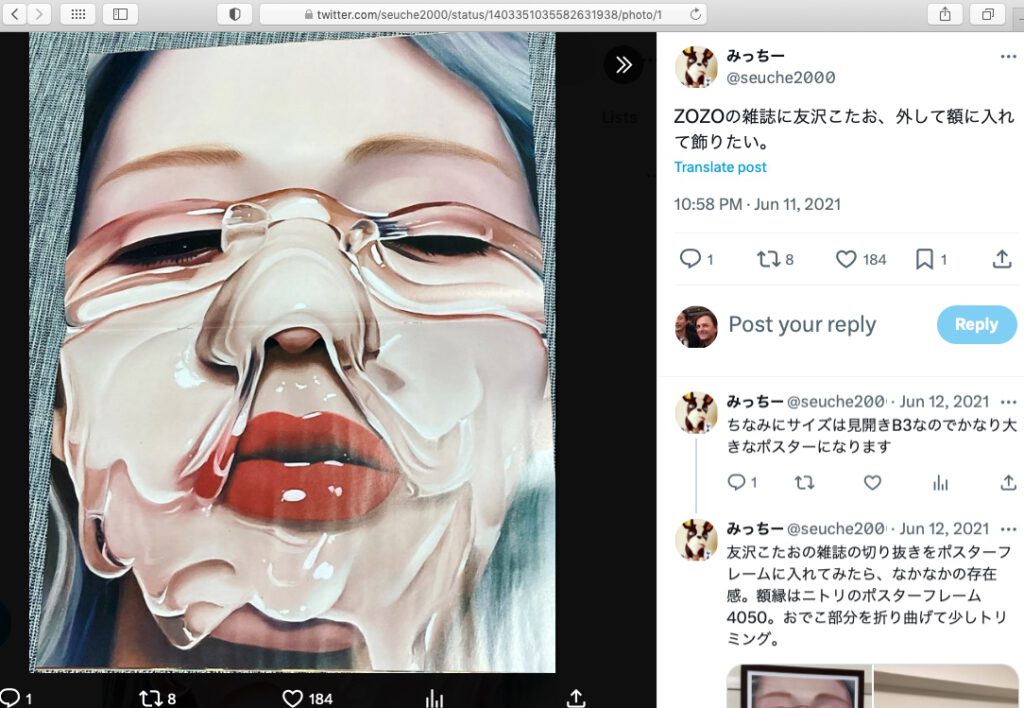
In Kotao’s case, especially for Japanese men, the imaginary, suggestive connection between the slime on her face and Bukkake ぶっかけ (a sex act in which one participant is ejaculated on by multiple participants), elevates her body of works, intentionally or not, onto a sexual oriented level.
Japanese “idols” want to be loved, supported and protected. This kind of insecure feeling transmits a typical Japan-related (sexual) attractiveness.
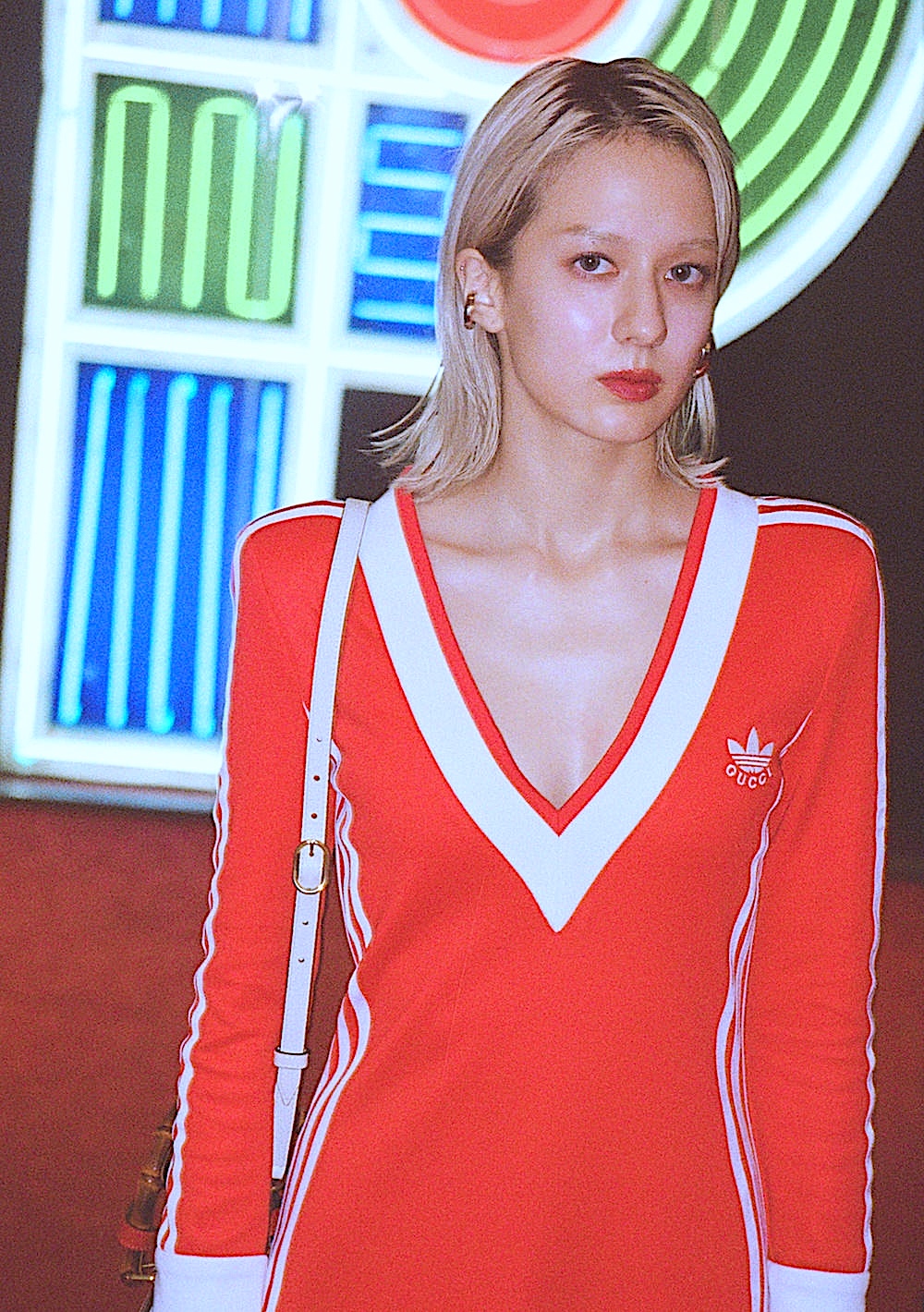
photos: cccs courtesy creative common sense。
Once the teen girl/young woman becomes adult (The age of adulthood was set at 20 years old since 1876. However, the Japanese Civil Code revised in 2018 came into effect in April 2022, implementing a first step into adulthood at 18 years old for specific situations.), looses her ‘virginity’, so called “fans” / “followers” (especially Japanese men) switch to the next young, “pure + kawaii” gig / target.
Compare with:
現代日本のオタク文化:名取さな Contemporary Japanese Otaku Culture: SANA NATORI
https://art-culture.world/articles/japanese-otaku-culture-sana-natori/
One reason of Kotao’s popularity in the Japanese art scene lies in the astonishing prices of her works. Despite being still a student, born in 1999, Japanese art flippers earned with a four-year-old painting by Kotao, bought for around 10.000 US$, more than 80.000 US$ (at the exchange rate 1 $ = 147 Yen). See the screenshots below from two auctions @ SBI Art Auction from last months (27 – 28 January 2024 + 9 March 2024).
Tomozawa’s work @ 銀座のギャラリー EARTH 2 GALAXY, Ginza in January 2023:

see:
銀座のギャラリー EARTH 2 GALAXY Gallery in Ginza
https://art-culture.world/articles/earth-2-galaxy/
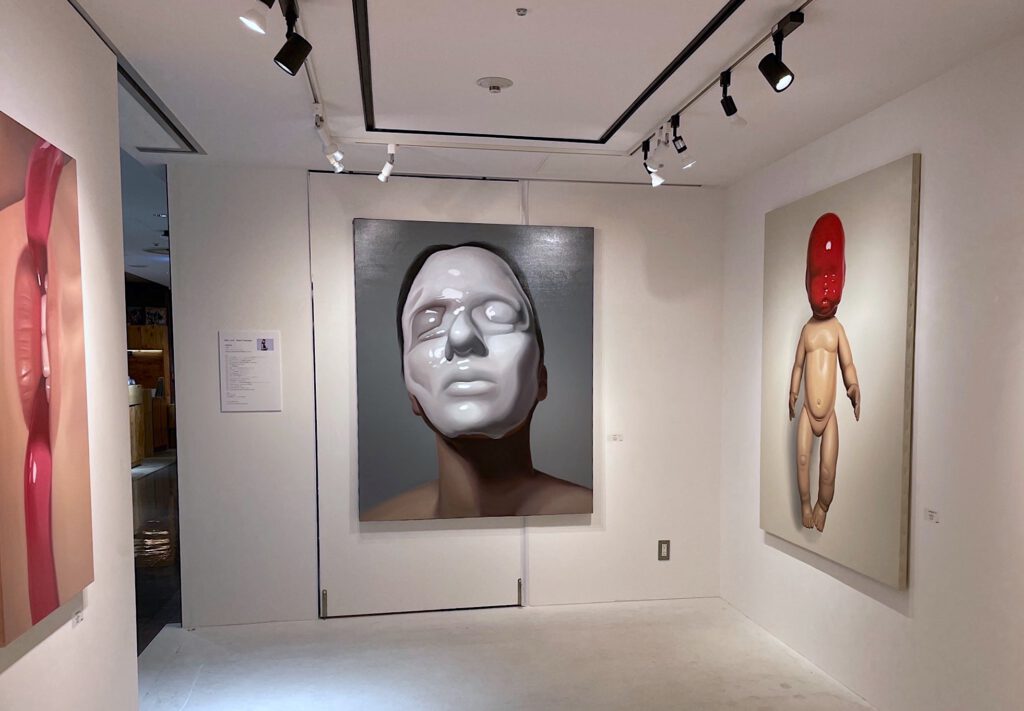
Up-date 2025/3/31
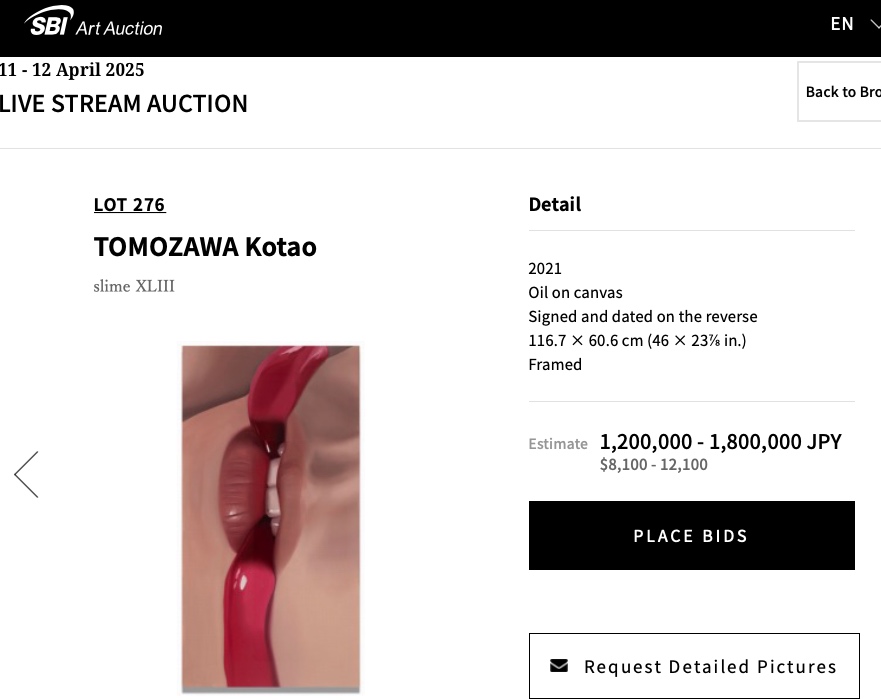
SBI Auction
11 – 12 April 2025
LIVE STREAM AUCTION
LOT 276
TOMOZAWA Kotao
slime XLIII
2021
Oil on canvas
Signed and dated on the reverse
116.7 × 60.6 cm (46 × 23⅞ in.)
Framed
Estimate 1,200,000 – 1,800,000 JPY
$8,100 – 12,100
https://www.sbiartauction.co.jp/en/auction/detail/129/276
(end of up-date)


SBI Art Auction
27 – 28 January 2024
Modern and Contemporary Art
LOT 145
友沢 こたお
slime XXXVII
Detail
2020
油彩、キャンヴァス
裏にサイン、制作年、証明書にサイン
162.0 × 130.3 cm (63¾ × 51¼ in.) (F100)
額装
TAGBOAT作品証明書
Estimate
¥2,000,000 – 3,000,000
Result: Price realised (JPY) including buyer’s Premium (not including VAT)
¥12,075,000
展覧会歴: 2021年2月12日-3月4日 友沢こたお展「caché」阪急メンズ東京、東京
コンディション:良好です。全体に細かい埃の付着が見られますが、制作時のものと思われます。額の構造上、アクリル板と作品が近接しているため、キャンヴァスのわずかなたわみで接触するおそれがあります。作品保護のため額を開けての検品はしていません。
LOT 145
TOMOZAWA Kotao
slime XXXVII
Detail
2020
Oil on canvas
Signed and dated on the reverse, Signed on the certificate
162.0 × 130.3 cm (63¾ × 51¼ in.) (F100)
Framed
Certificate of Authenticity by TAGBOAT
Estimate
¥2,000,000 – 3,000,000
$14,100 – 21,100
Result: Price realised (JPY) including buyer’s Premium (not including VAT)
¥12,075,000
Price realized (US$) // exchange rate used: 147.65
$81,781
Exhibited: February 12, – March 4, 2021 KOTAO TOMOZAWA solo show “caché” HANKYU MEN’S TOKYO, Tokyo
Condition: Good condition. There is minor dust accumulation, which is thought to be in its original condition. Due to the structure of the frame, the plexiglass and the artwork are close to each other, and the slightest deflection of the canvas may cause them to come into contact. It is not examined out of frame to protect the work.
https://www.sbiartauction.co.jp/results/detail/121/145
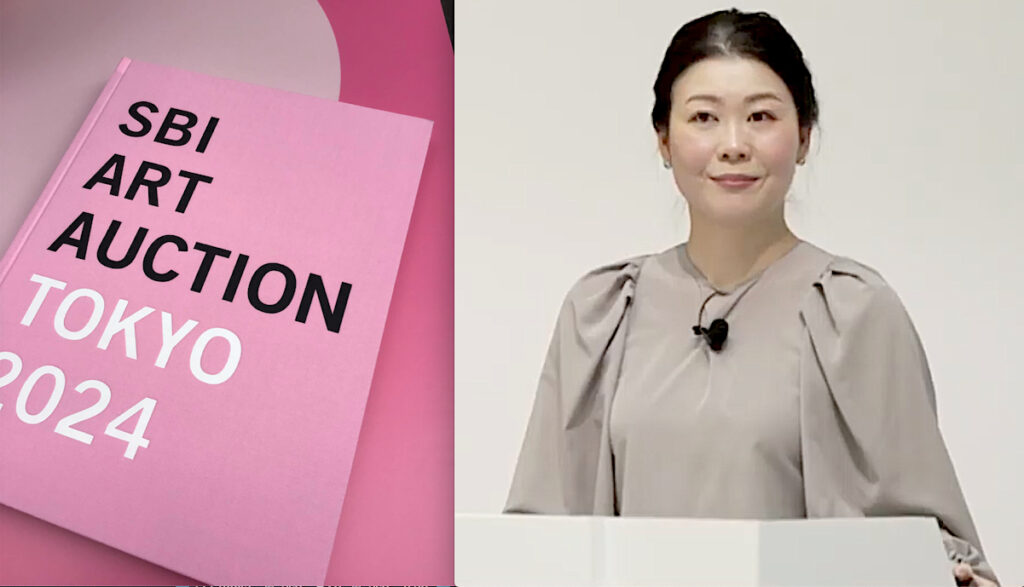


SBI Art Auction
9 March 2024
Tokyo Contemporary: Redefined
LOT 002
TOMOZAWA Kotao
slime XL
2021
Oil on canvas
Signed and dated on the reverse
162.0 × 130.3 cm (63¾ × 51¼ in.) (F100)
Estimate
¥2,000,000 – 3,000,000
$14,100 – 21,100
Price Realized: ¥ 8,855,000 JPY
Provenance: Private Collection, Japan
Exhibited: February 12 – March 4, 2021 “caché” tagboat, Tokyo
Literature: “KOTAO” PARCO Shuppan, 2022, No. 33
Condition: Good condition. There are very minor dust in places and minor brush hairs on paint which are thought to be original condition.
友沢 こたお
slime XL
2021
油彩、キャンヴァス
裏にサイン、制作年
162.0 × 130.3 cm (63¾ × 51¼ in.) (F100)
Estimate ¥2,000,000 – 3,000,000
落札価格: ¥ 8,855,000 JPY
来歴: 個人蔵、日本
展覧会歴: 2021年2月12日-3月4日「caché」tagboat、東京
文献: 「KOTAO」PARCO出版、2022年、No. 33
コンディション:良好です。全体にわずかな埃の付着があります。絵具に毛埃の混入がありますが、制作時のものと思われます。
https://www.sbiartauction.co.jp/results/detail/120/2
https://www.sbiartauction.co.jp/en/results/detail/120/2
Next to German ‘artnet’ exists also ‘Artprice’, a French online art price database. Recently these French guys created the term “Ultra Contemporary Art Market”. Four months ago, the Japanese art magazine BT 美術手帖 brought a report on the SBI Auction results for 2023, plus the line up of those ‘hot’ artists, mentioned in “Ultra Contemporary Art Market” by Artprice.
NEWS / MARKET 2024.1.19
落札総額は約52億円。SBIアートオークション株式会社が2023年の活動を振り返るレポートを発表
昨年、計7回のオークションを開催したSBIアートオークション株式会社が、2023年の活動を振り返るレポートを公開した。
https://bijutsutecho.com/magazine/news/market/28342
より.jpg)
As you can see, No. 1 KYNE and No. 2 IDA Yukimasa 井田幸昌 had been already introduced by me, here @ ART+CULTURE, check the links.
Capturing the Zeitgeist, Japan’s Coolest Artist KYNE
KYNE:福岡のストリートから世界へ
https://art-culture.world/articles/kyne-zeitgeist-japan/
右翼の為、1千600万円で販売した、アドルフ・ヒトラー像を描いた井田幸昌。ファック・ユー。
IDA Yukimasa painted a portrait of Adolf Hitler, which sold for 120.000 US$, for the Right-Wing. FUCK YOU.
https://art-culture.world/articles/ida-yukimasa-adolf-hitler/
No. 5 is TOMOZAWA Kotao 友沢こたお.
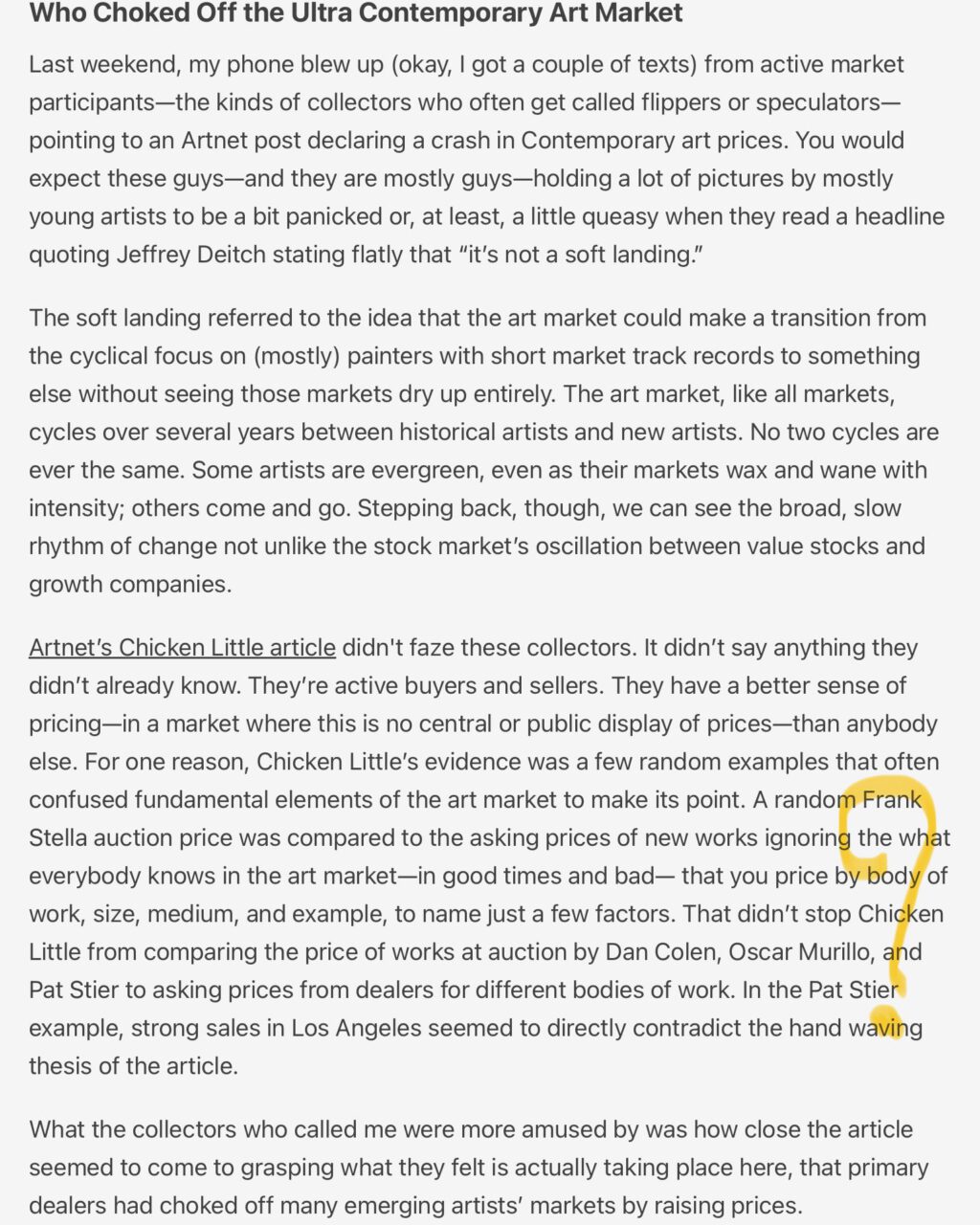

To get the right context about the current situation in the art market, I am posting the whole text by highly respected Katya Kazakina, written on the 22nd of March of this year. The copied text can be regarded as an extended artistic practice from my side. Of course: Creative Commons Attribution Noncommercial-NoDerivative Works, cccs courtesy creative common sense
‘It’s Not a Soft Landing’: Contemporary Art Prices Come Crashing Down. Is This the End?
Current market conditions challenge the popular belief that art always goes up.
The fog of flipping is lifting, and the emerging landscape is littered with casualties.
Just look at any number of contemporary art auctions that occurred this month. “Contemporary Curated” at Sotheby’s on March 1: 82 percent of lots sold (after 22 lots were withdrawn). “New Now” at Phillips on March 12: 72 percent sold by lot (after 12 withdrawals). “Postwar to Present” at Christie’s on March 13: 73 percent sold by lot (with 8 lots withdrawn). And much of what did sell went for well below previous highs.
“There’s a bit of a carnage in the market at the moment,” one collector told me, as we reviewed the results. “Many things are not selling at all or selling for a fraction of what they used to.”
A glaring example: Emmanuel Taku’s painting Sisters in Pink, which I featured in a column about the soaring prices for emerging African artists two years ago.
The painting first hit the auction block in 2021, the year it was painted, after a couple of rapid-fire flips. It fetched a whooping $189,000 against a top estimate of $35,000.
Its new owner had no such luck this month: Sisters in Pink hammered at just $8,000 against an estimate of $10,000 to $15,000.
Let that sink in: Someone who bought the painting for $189,000 sold it for $8,000 three years later. No, I am not missing a zero.
That stark result got me thinking about how people in the art industry think about prices, myself included.
Over the past two decades, there emerged a perception of art as an alternative asset that could—with the right moves and timing—store value as well as (if not better than) traditional assets like stocks, bonds, and real estate.
But what happens to this narrative when prices come crashing down, as they are now? Why does investment-grade art appear to be a lot less liquid than even two years ago? Are we facing a future where investors may be hard-pressed to recoup their money? How did we get here?
I will examine these topical questions in a series of articles. But first, allow me to backtrack.
When I started on the art-market beat at Bloomberg in 2006, discussing prices was considered borderline gauche. I had to jump through all kinds of hoops to get prices from the galleries. At art fairs, many dealers would take one look at my press badge and clam up.
Things changed as the financialization of art became a huge story. Auction houses and galleries realized that they could generate a lot of publicity with big prices. Here are some typical Bloomberg headlines from years past:
– “$110 Million Basquiat Sold by Family Who Bought It for $19,000”
– “A Brass Sculpture Could Deliver a 1,400,000% Return for Heirs”
– “How to Handle the $85 Million Gain From That Basquiat Windfall”
I once worked with an editor who pioneered art-market coverage at the Wall Street Journal in the 1970s. He urged me to do a story about the market’s big problem: liquidity. “Art is very hard to resell,” he said. I shrugged it off, laser-focused as I was on art as an investment.
Now I am finally doing it—or, at least, dipping my toes into this massive topic. I was tempted to call it “the art market’s dirty secret,” but no one I spoke with seemed surprised.
“I’d say that 85 percent or 90 percent of all art is like a new car,” one art advisor told me. “As soon as you roll it off the lot, it’s worth a lot less—except for the very rare collectors’ cars that have waiting lists and, for the time being, are worth a heck of a lot more.”
The advisor, who has a thriving business, asked not to be named, and it’s easy to see why. The transactional fever of the past two decades has been built on the notion that art rivals stocks and real estate as an investment.
Fractional-ownership companies like Masterworks are selling the dream to small investors, while art funds target wealthy ones with blue-chip trophies, and art bros speculate on hot emerging names. Market insiders just kept smiling and ringing the register. Cha-ching!
Over the past year, I began hearing concerns about a growing disconnect between the primary and secondary markets. Primary prices have gotten so high for many artists that they cannot be resold for a profit any longer, sources told me.
That complaint speaks volumes about this investment-obsessed moment in the art world.
“Until relatively recently, the common wisdom was that if art held its value over time, that was a success,” an auction executive said. “Most importantly, you had the pleasure of living with it, and if you could sell it years later and get your money back, that was impressive.”
The newer narrative has been seductive for all involved. Headlines touting major returns have convinced many that buying art low and selling high is a walk in the park.
It isn’t.
“If you are lucky, and if you buy smartly,” the advisor likes to remind clients, “one of the 10 things in 20 years will pay several times over and will pay for the rest of your art collection that might be worth next to nothing.”
There are plenty of cautionary tales: Anselm Reyle, Zombie Formalism, and more recently, Rudolf Stingel and Wade Guyton, whose markets suffered in the aftermath of the Inigo Philbrick fraud.
Galleries work hard to create the imprimatur of value by building up their brands and placing prized artworks in prestigious collections, museums settings, and biennials. An entire ecosystem is there to reinforce the belief that art goes up.
“The average rich person wants to believe that it’s true,” another advisor said.
Just a few examples can demonstrate the actual reality.
Take Pat Steir, a revered octogenarian whose 14 new paintings at Hauser & Wirth in Los Angeles sold in 24 hours, I hear, at prices ranging from $700,000 to $850,000. A quick search of the Artnet Price Database reveals that just 10 works by Steir (out of the 167 listed) fetched more than $700,000 at auction. The artist’s auction record of $2.3 million was set back in 2018.
Ditto Frank Stella. On March 1, a massive sculpture he made in 1982 was sold without a reserve at Sotheby’s for just $48,260 against a low estimate of $150,000. His new works are currently priced at $2.5 million at Jeffrey Deitch in New York. “They cost so much to make that the asking price is not that much more than the fabrication,” Deitch said. “When people seeing these new works they are stunned.”
Ditto Oscar Murillo, whose new paintings have been sold by David Zwirner for $350,000, $400,000, and $500,000, according to Artnet’s invaluable Price Check column. Meanwhile, Murillo’s recent auction prices are a fraction of those figures. Since the pandemic, 50 paintings by the Colombian artist came up for sale and a quarter flopped—including, most recently, a painting at Phillips in London that was estimated at £50,000 to £70,000 ($63,000–$88,000), according to the Artnet Price Database. His auction record, $401,000, was set in 2013.
Ditto Dan Colen, another erstwhile speculators’ darling, whose large-scale painting Vengeance (2015) from Miami’s esteemed de La Cruz collection, recently fetched $15,400 at Sotheby’s. New paintings of its size retailed for $450,000 on the primary market, according to people familiar with his pricing. It’s safe to assume that the mega collectors got a mega discount, but even so, the question looms: Why would the market-savvy family take such a huge loss? (The answer will have to wait: Sadly, Rosa de la Cruz died last month.)
Ditto Loie Hollowell, who has her first museum show at the Aldrich in Ridgefield, Connecticut, right now. Her painting Lick Lick in Blue, Green and Yellow (2015), estimated at $500,000 to $700,000, didn’t find a taker at Christie’s earlier this month.
This could go on and on, including artists at every price point and career stage. Here are some whose works didn’t sell at the most recent Phillips auction: Robert Rauschenberg, Hank Willis Thomas, Lisa Yuskavage, Vaughn Spann, Peter Saul, Petra Cortright.
“It’s not a soft landing,” Deitch said of the current market conditions.
How do collectors feel about this? Naturally, opinions vary.
Many agree that primary prices have gotten too high. Some are clearing out their art storage and dumping the contents at auction before it all goes down to zero. Others don’t concern themselves with the market.
“I don’t buy art because I think that the prices are going to go up,” said Beth Rudin DeWoody, a veteran collector and philanthropist. “There are a lot of young artists. I have no idea what’s going to happen with their careers. I like to support young artists or artists who’ve been overlooked. Sometimes they do go up and sometimes they don’t.”
Evan Ruster, who’s been collecting for more than two decades, considers himself lucky when it comes to his art acquisitions. He’s made a couple of shrewd sales along the way, but doesn’t buy art with a plan to resell it.
“You are buying because you love it,” said Ruster. “It’s a passion. So you are not rational in a way.”
How do you price art, anyway?
“It’s so subjective,” Ruster said. “You are like: I just bought a piece of paper with some marks on it. I could have bought a fucking Audi.”
https://news.artnet.com/market/primary-versus-secondary-market-prices-2455677
The art world is a fictional, self-referential useless entity. We like to think we are important, which is not the case.
With young 24 years old Kotao, as an already extremely successful artist, the reaction by the contemporary local art collectors’ collective exemplarily put the notion of serious curatorial-minded art galleries in limbo.
None of the top 5 artists in the “Ultra Contemporary Art Market” list, with huge turnover sums on the Japanese auction arena, belongs to / is exclusively represented by a ‘traditional’, professionally working, established contemporary art gallery in Tokyo. This never seen situation in Japan, lets everyone, who is involved in the Japanese art industry, rethink her/his working position. Neither art stars MURAKAMI Takashi or NARA Yoshitomo are exclusively represented by a Japanese gallery. Why is that so?
The answer partly lies in the commercial, not socially-engaged, pro-capitalistic attitude by young Japanese artists. They regard themselves as part of the entertainment industry, which is constantly looking for new, unexploited flesh. KYNE, IDA Yukimasa and TOKOZAWA Kotao know how to play the commercial game, as they regard themselves more or less as clean, antiseptic Japanese art-workers.
No social conscience, no social engagements, no world news, – only innocuous arty pieces, please!
Kotao’s recent canvases of the personal slime faces are turning from the figuration to abstraction, see her last laura-painting for the arty university graduation @ Tokyo’s useless, obsolete, parodic, boring self-referential Geidai 芸大.
Specifically a non-idealised, non-narrative self-portraiture based on the photographs taken from her own perspective. Her strokes begin to resemble the paintings by MAKITA Ai 牧田愛,
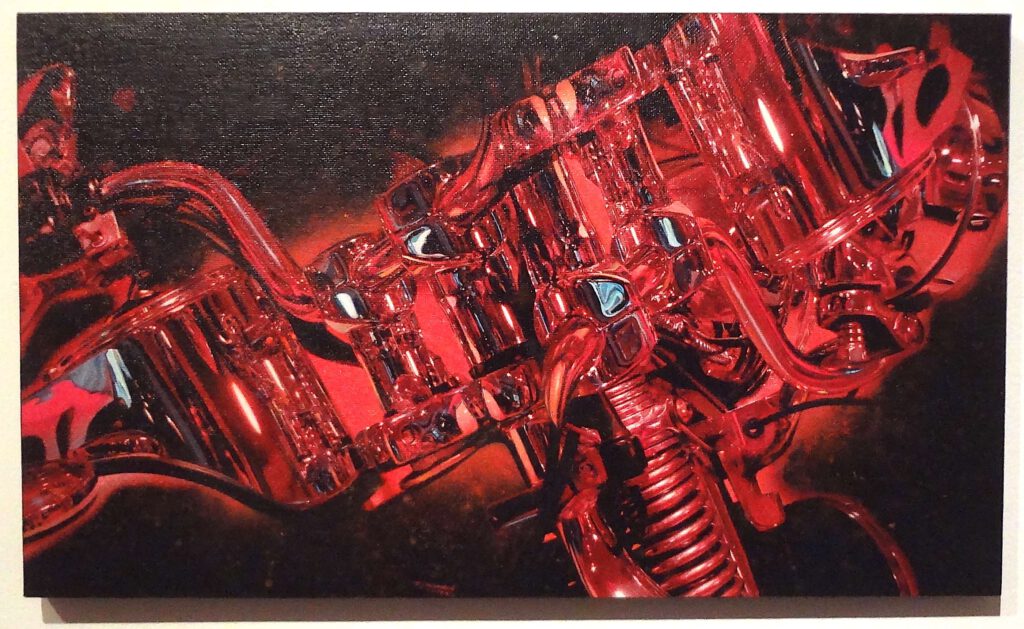
whereas the doll-like works show similarities to my body of work “ma poupée japonaise”.
Fusionist, performative notion towards sublime slime eroticism.
Kotao’s work thus reacquaints viewers with an almost childlike capacity for fantasy and creativity, while offering a meditation on the loss of innocence and its recuperation.
Kotao has developed a style of visual language that is fluid throughout both the art historical canon and her personal experiences through her mother Mimiyo, exuding a playful candidness.
2024 = 100 years of Surrealism.
Kotao’s deformative plasticisation as post-surrealist self-exposure embodies an artistic, sentimental statement. Constant self-reflection as vital position, seemingly on the verge of transmogrification.
Tokyo, 11th of January – 11th of May 2024, Basel
Mario A 亜 真里男
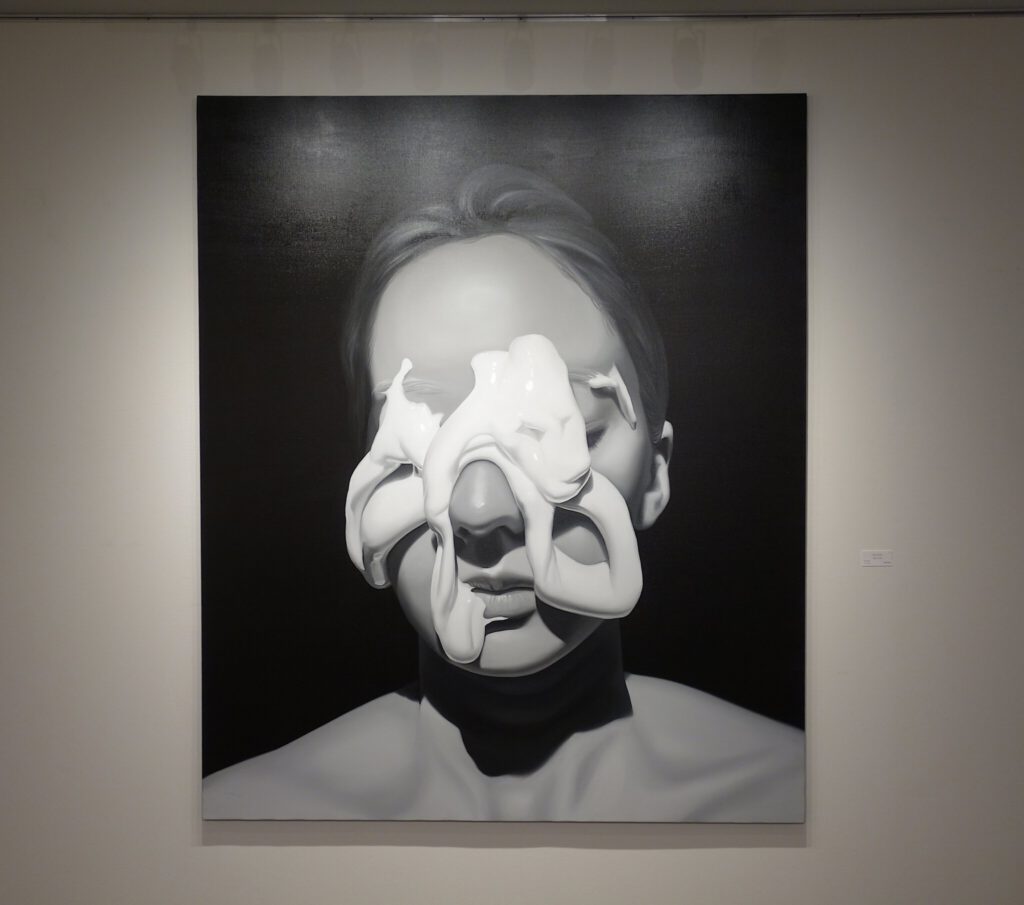
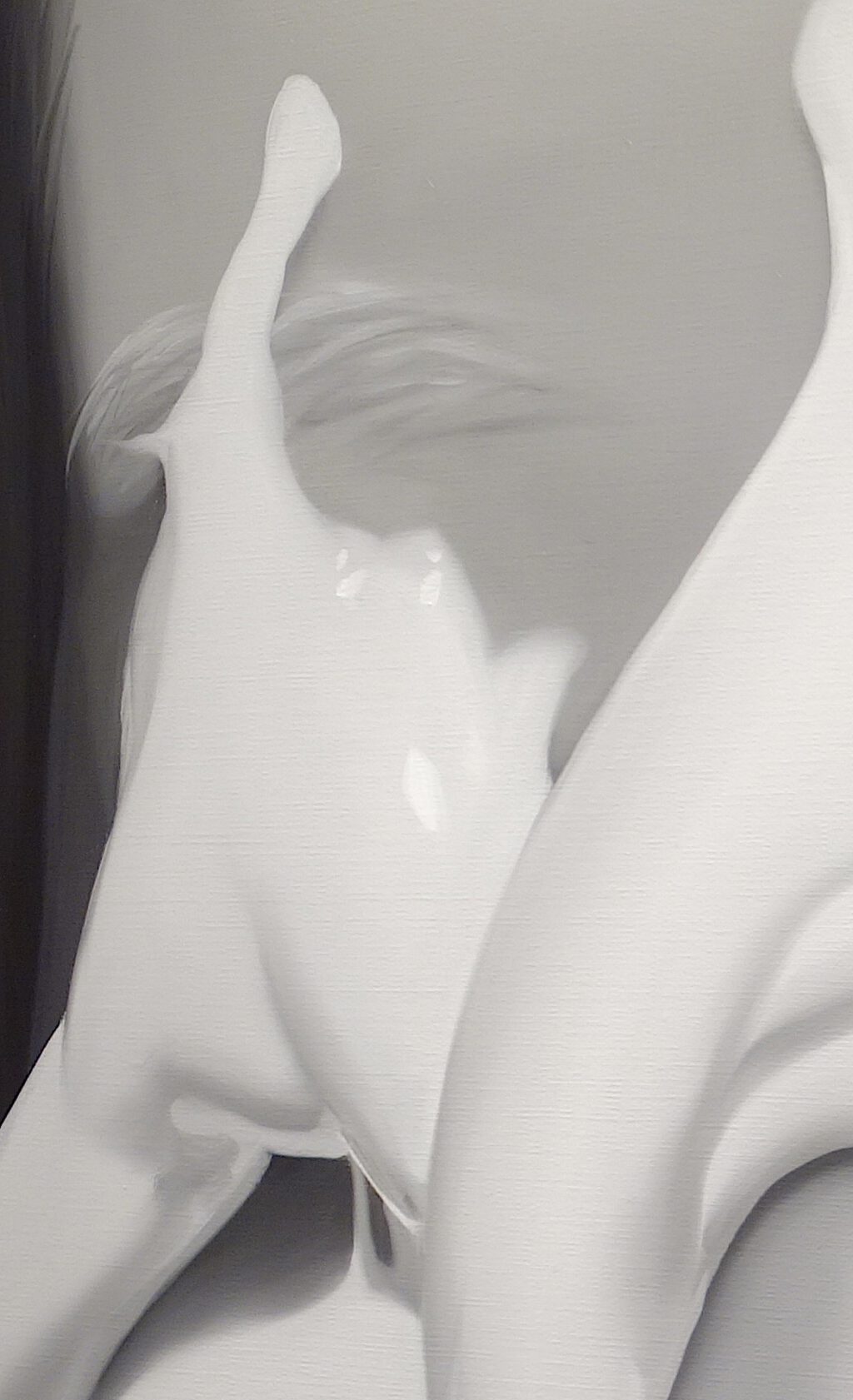
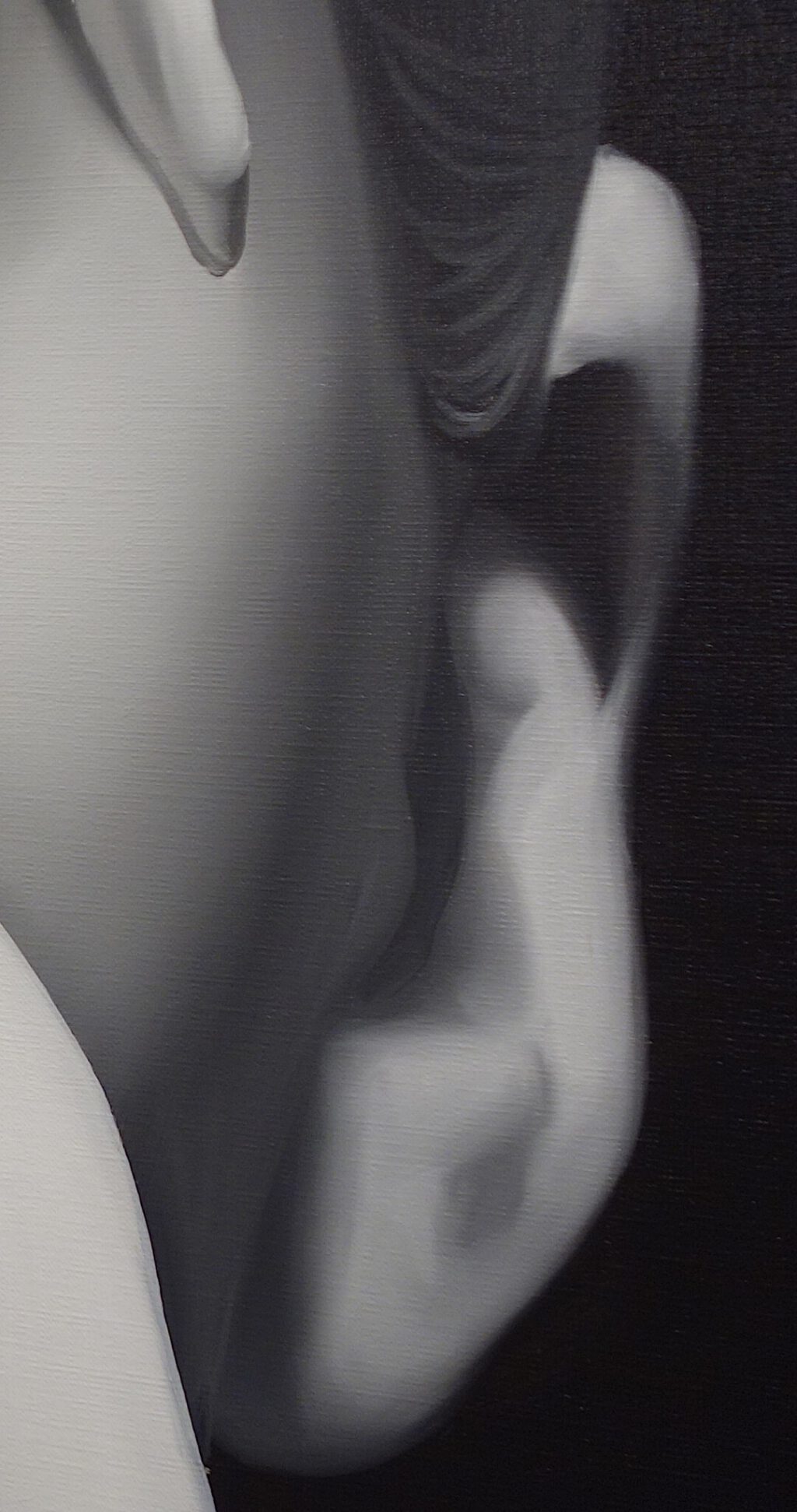
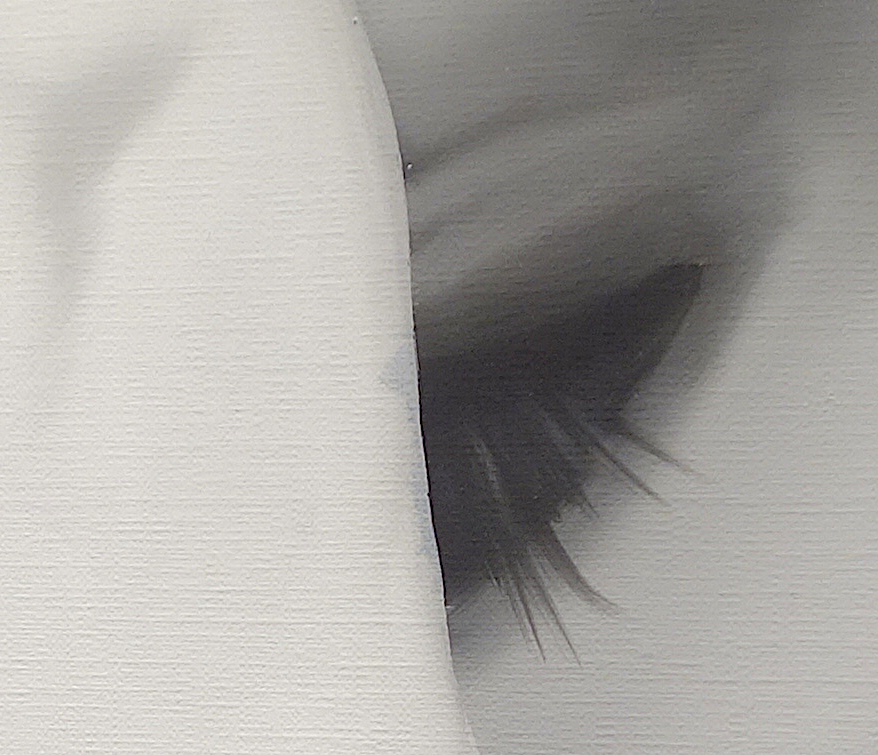


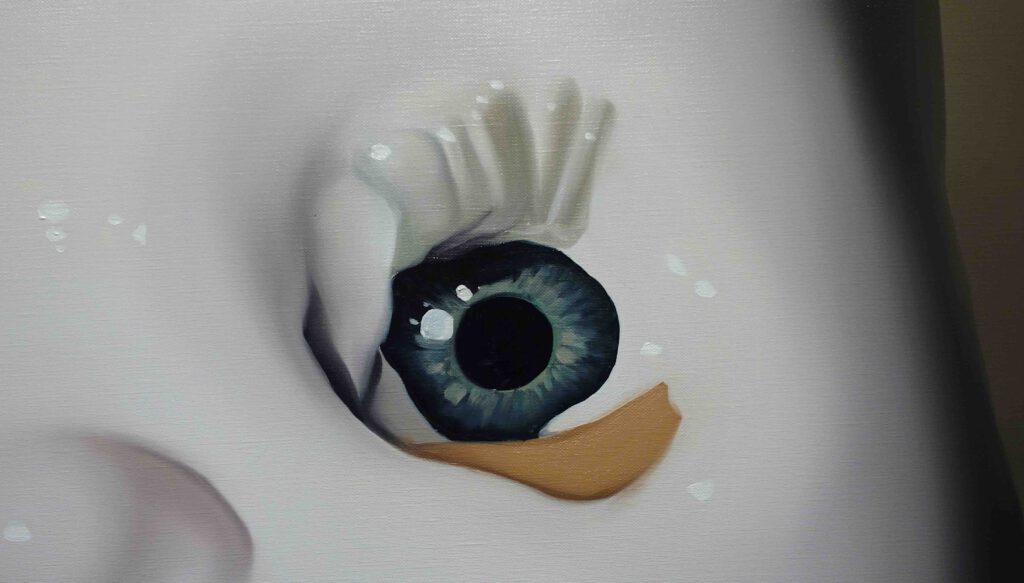



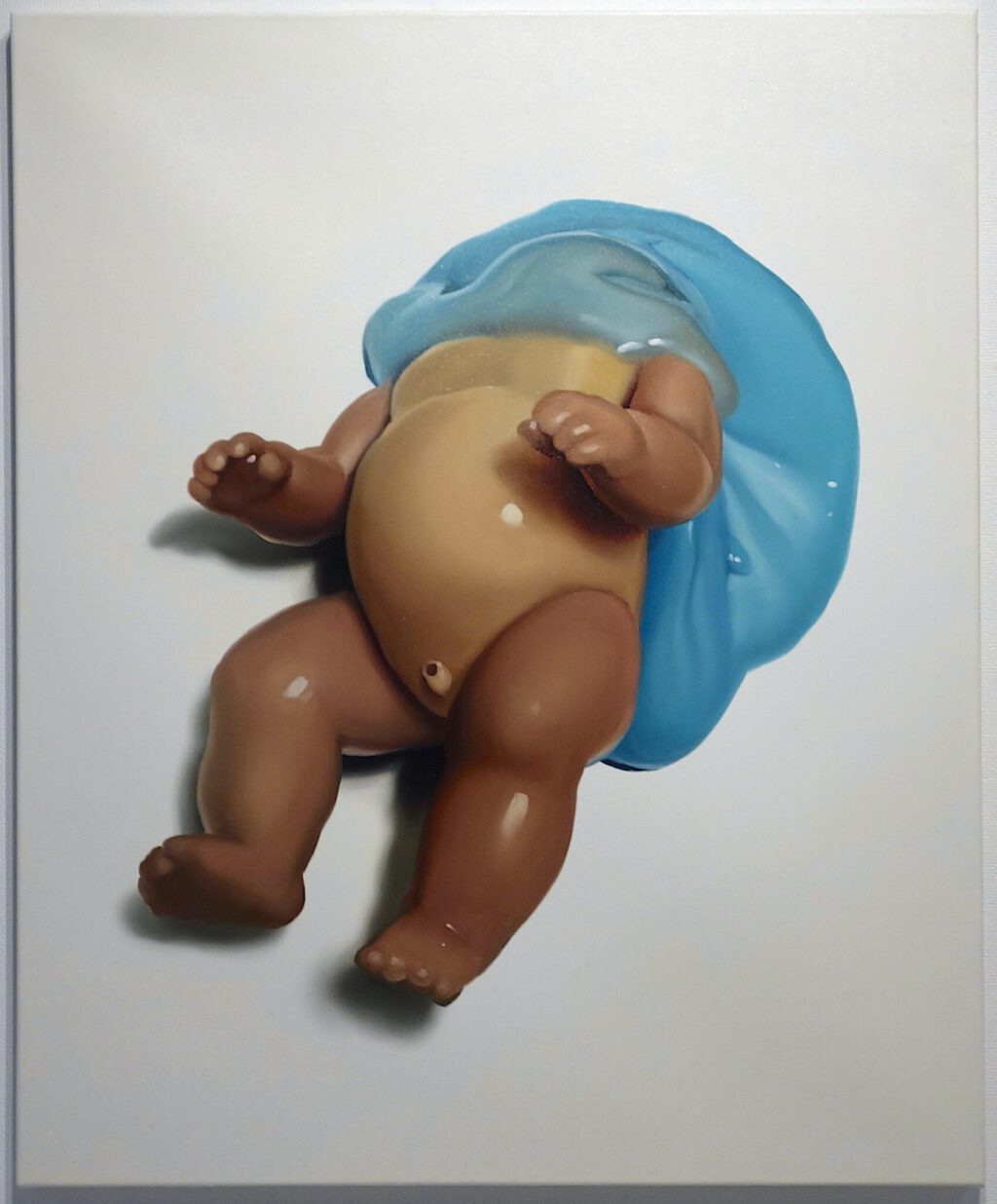
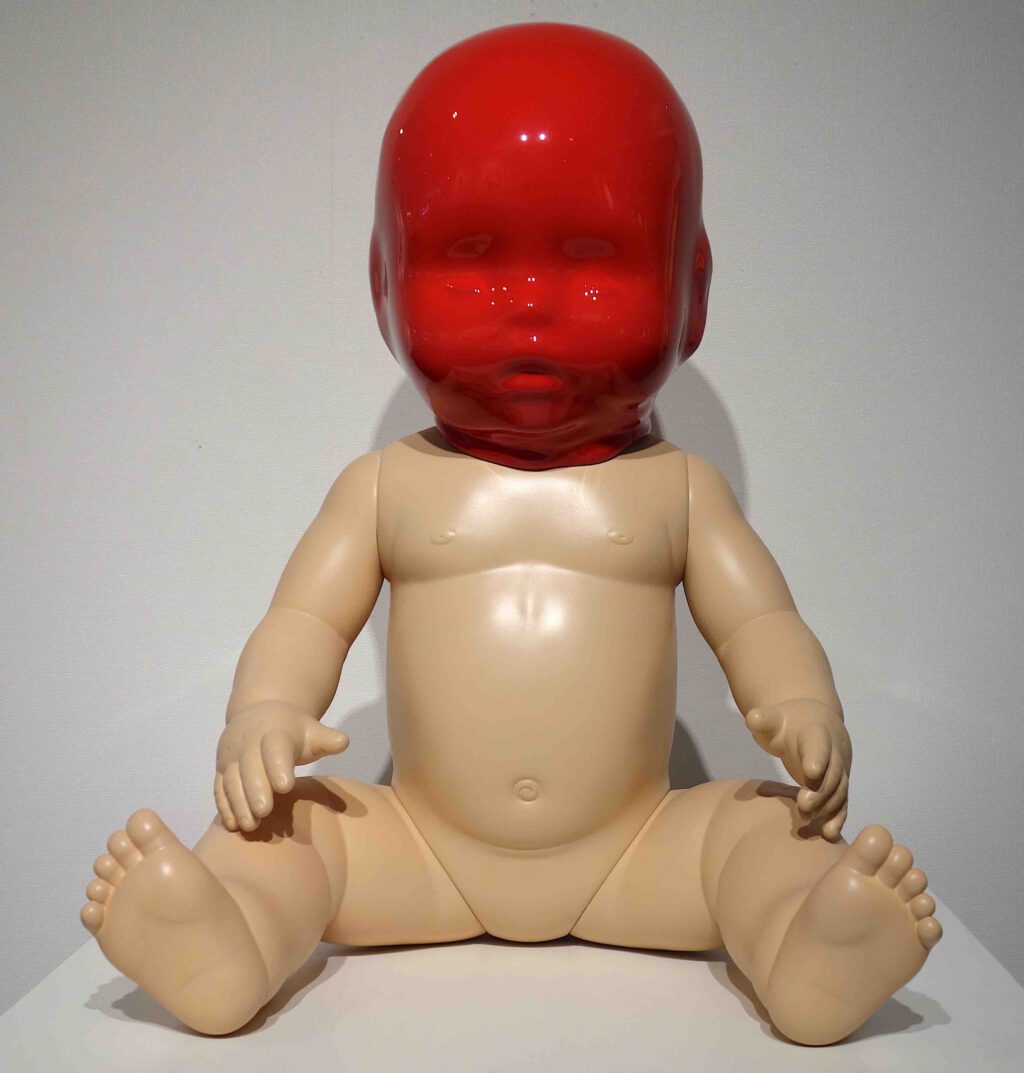
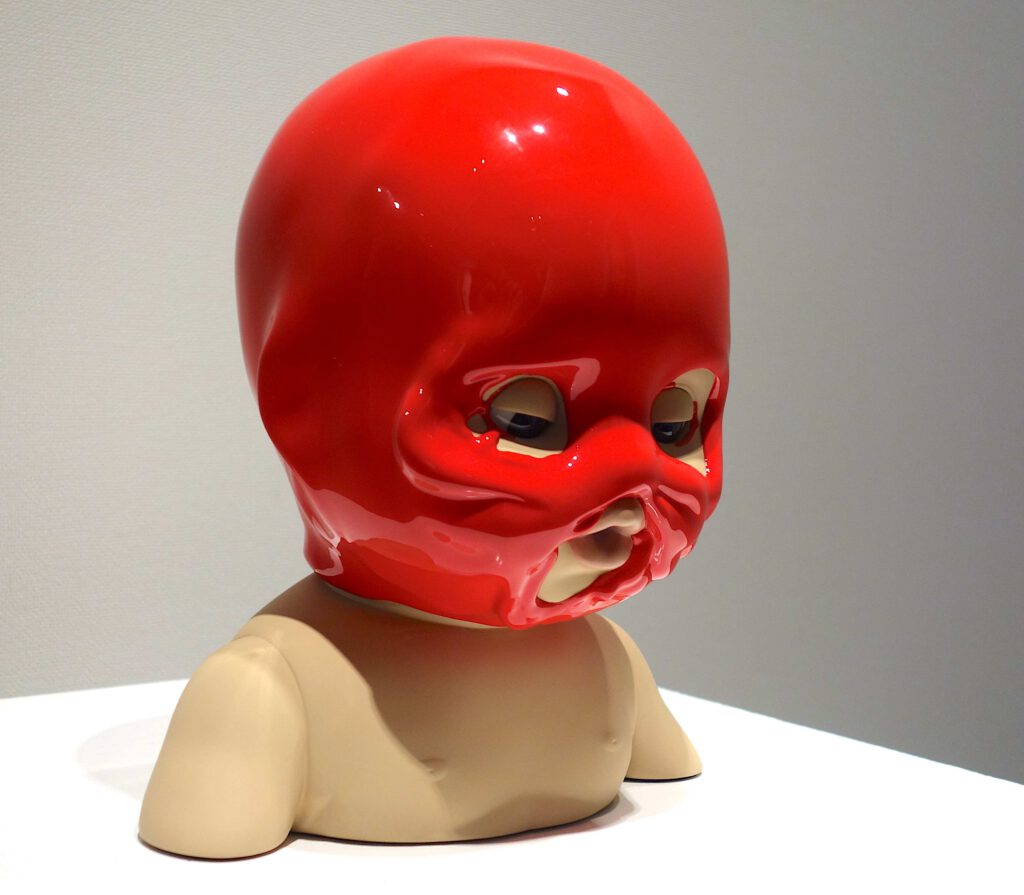


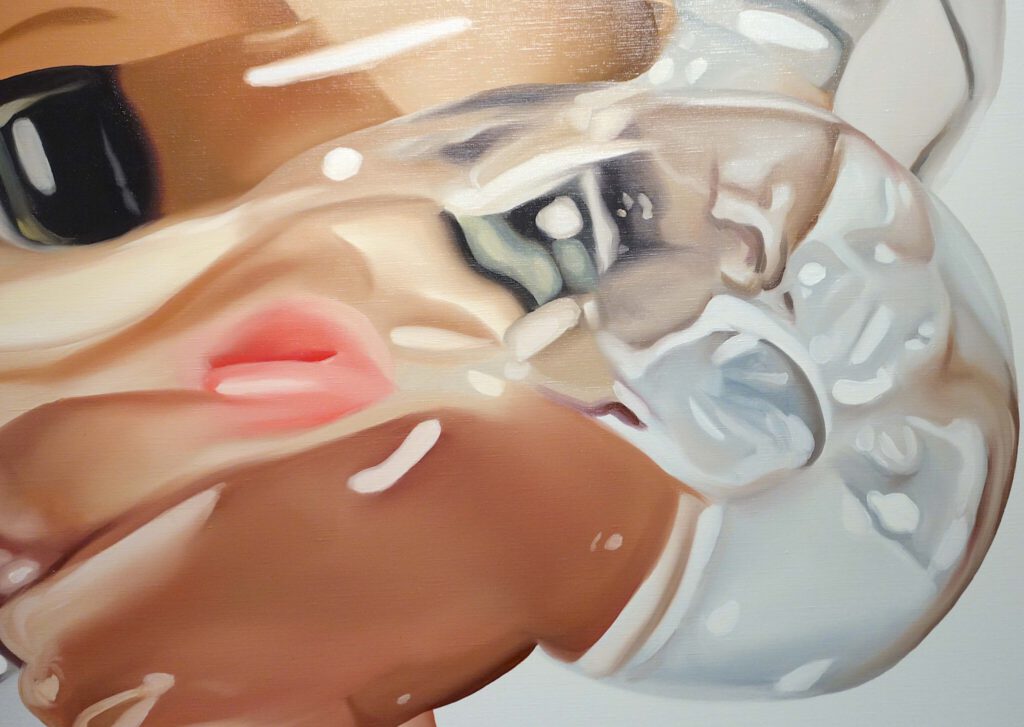
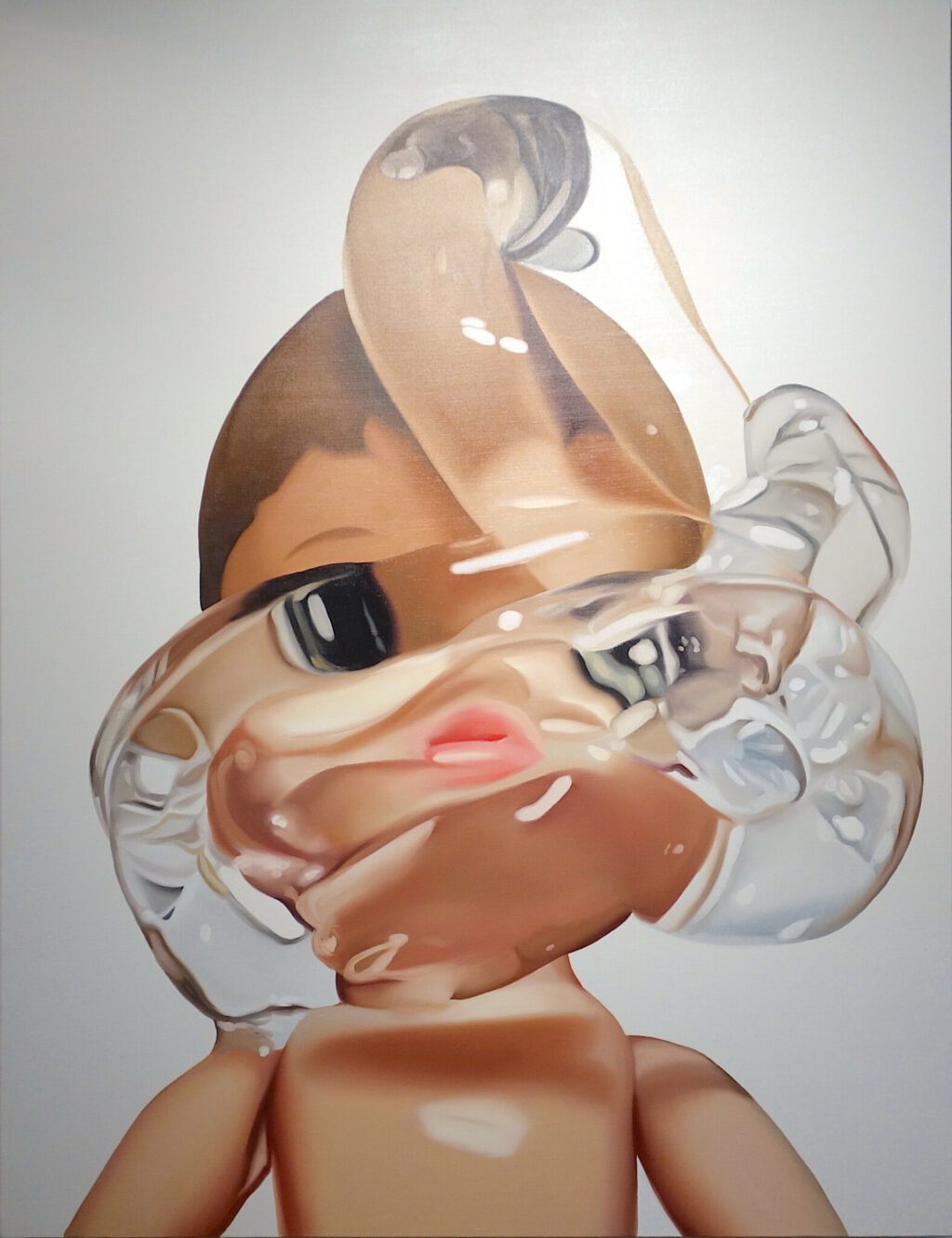
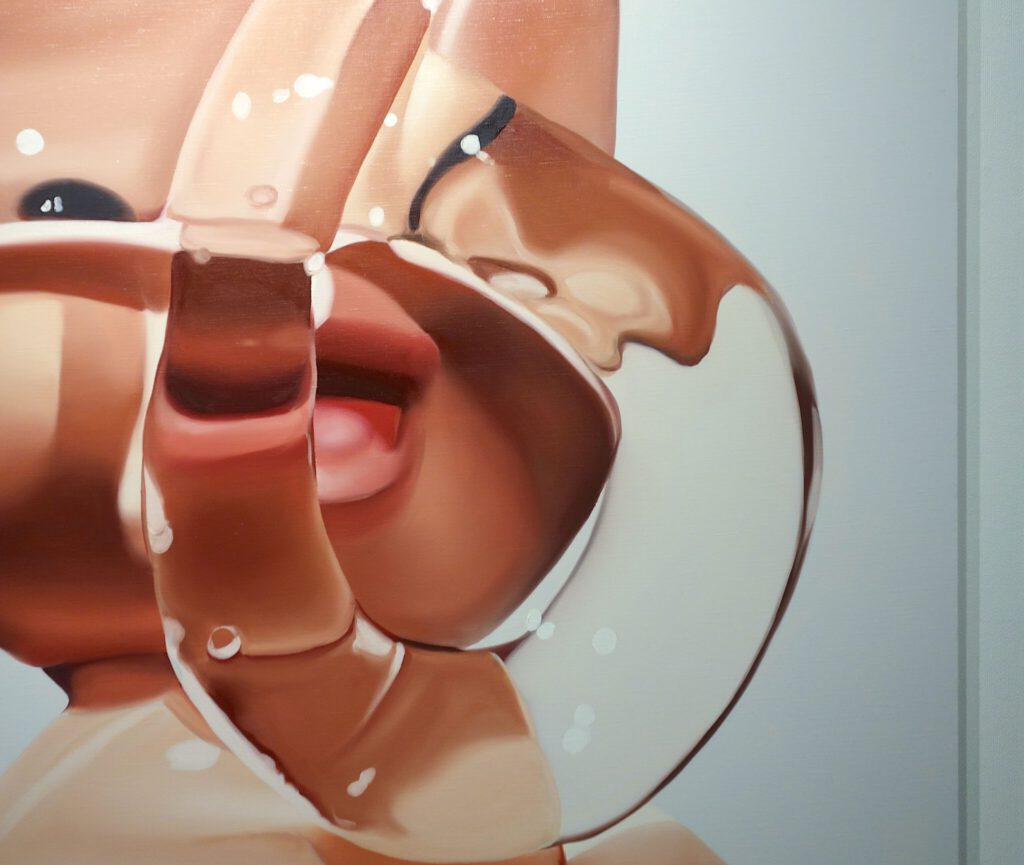
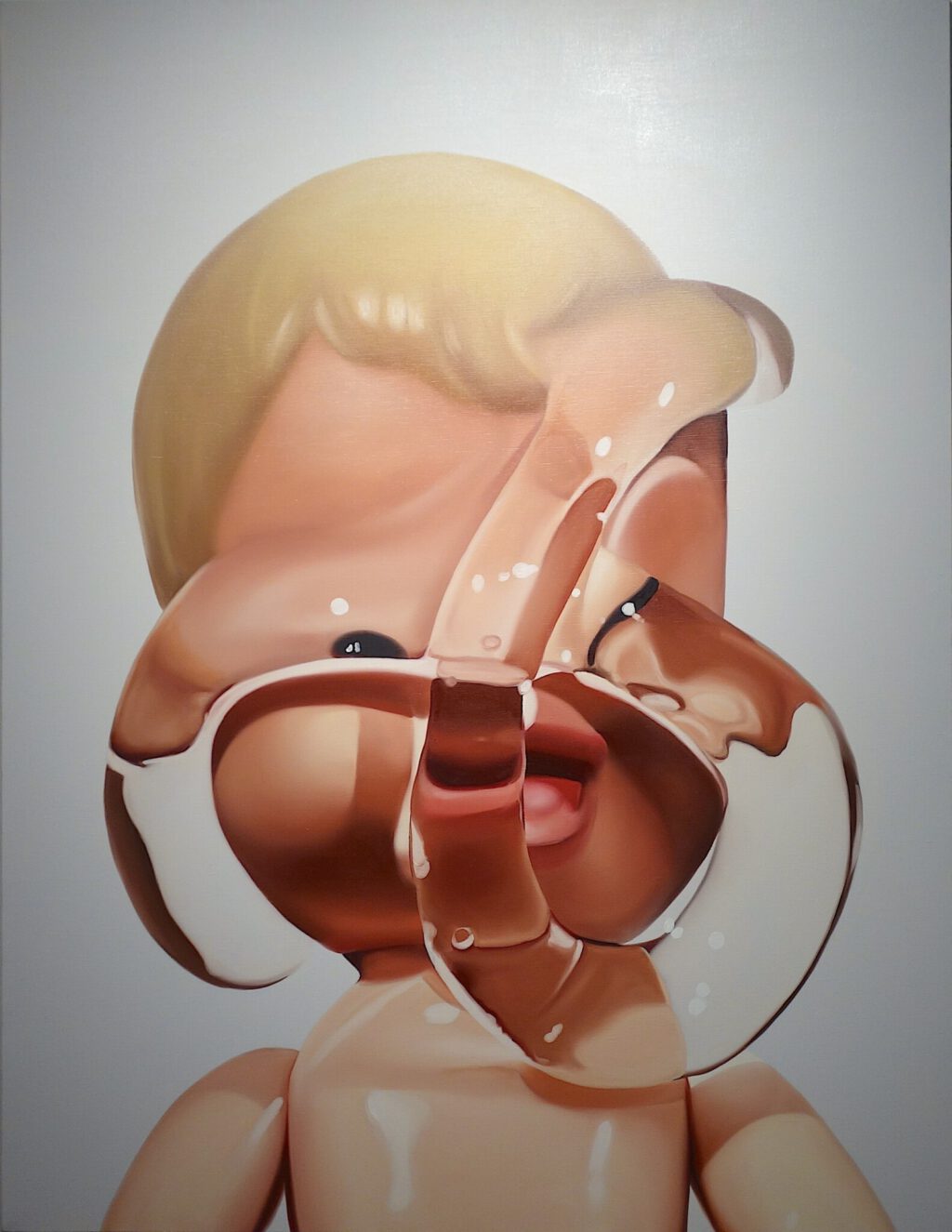
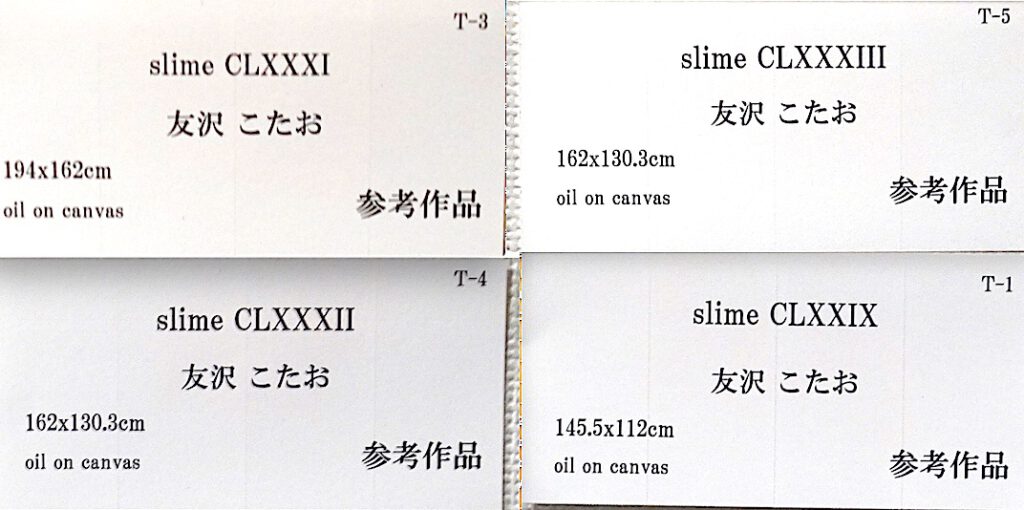
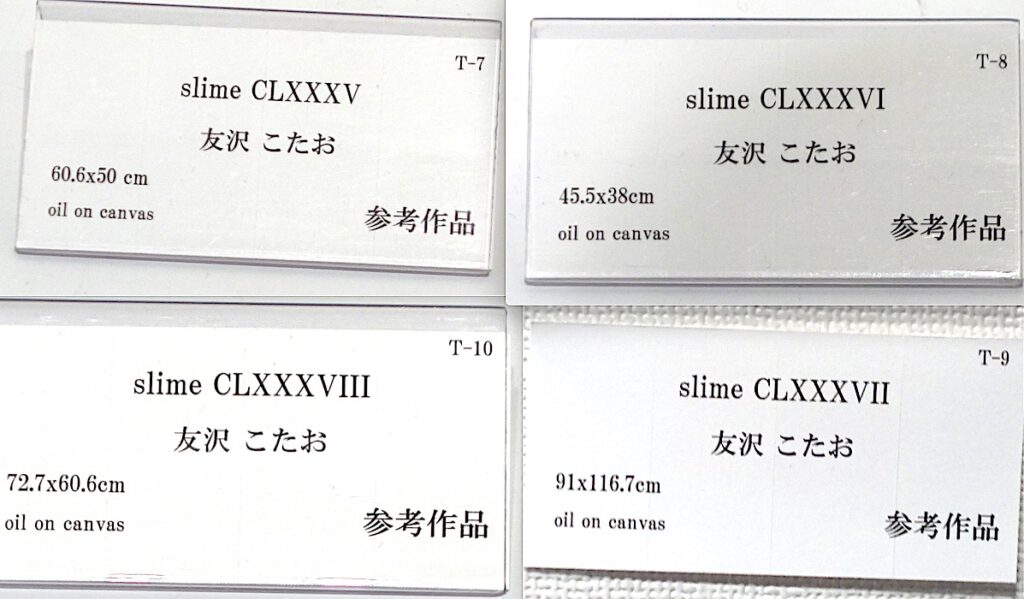

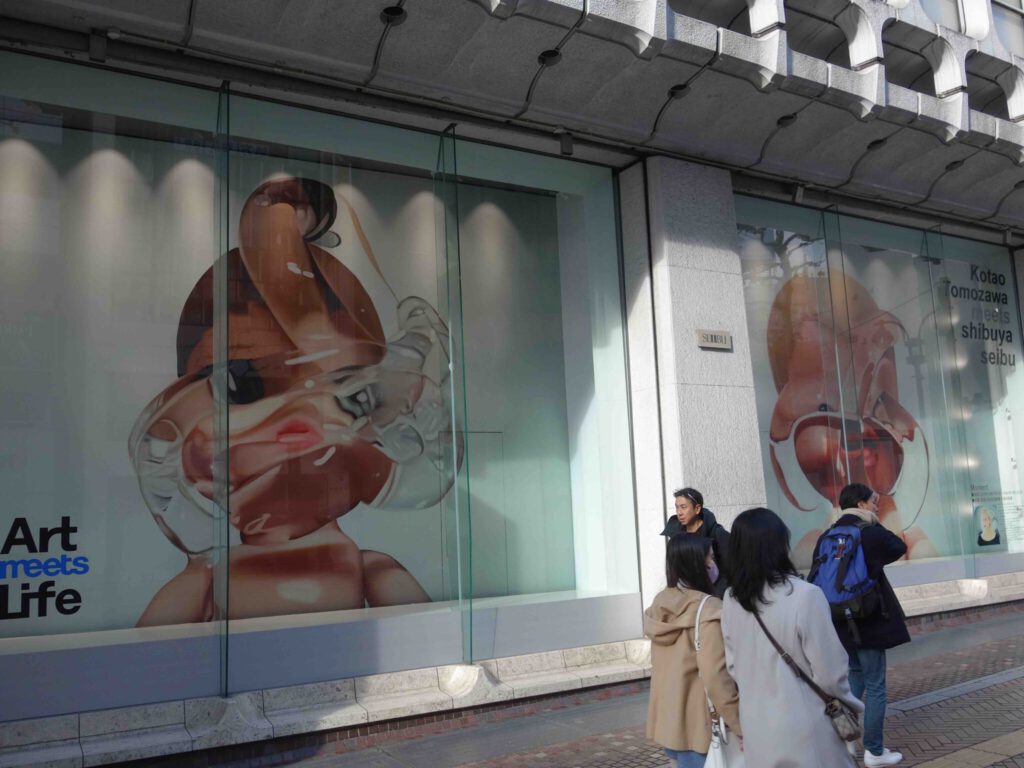
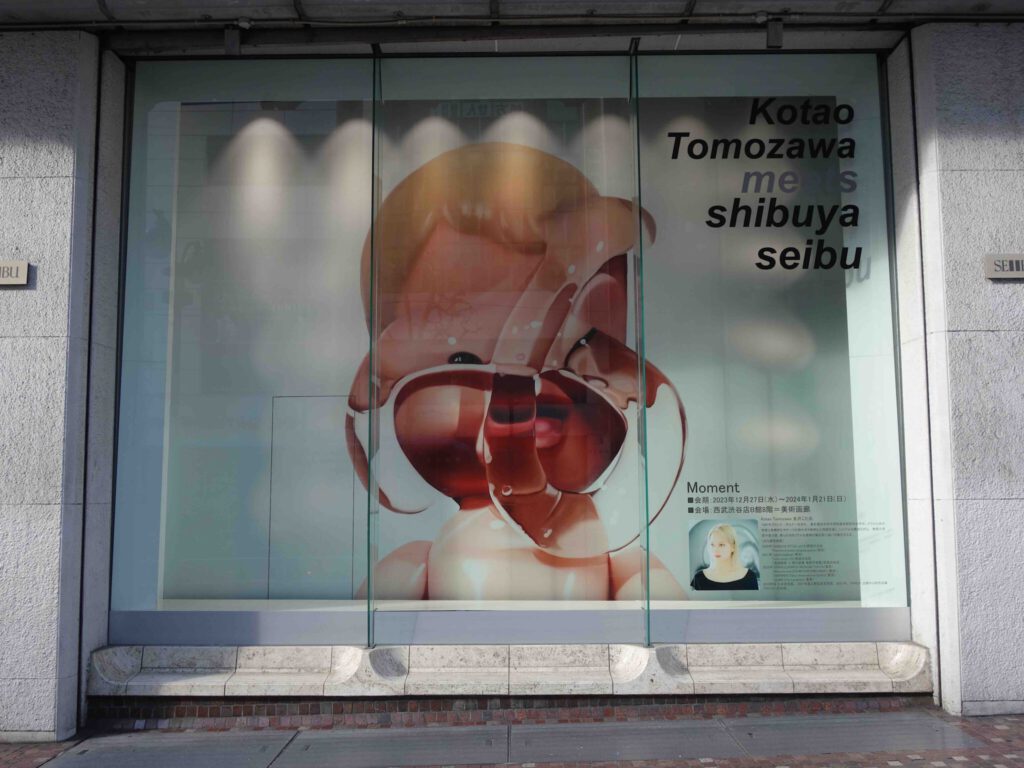
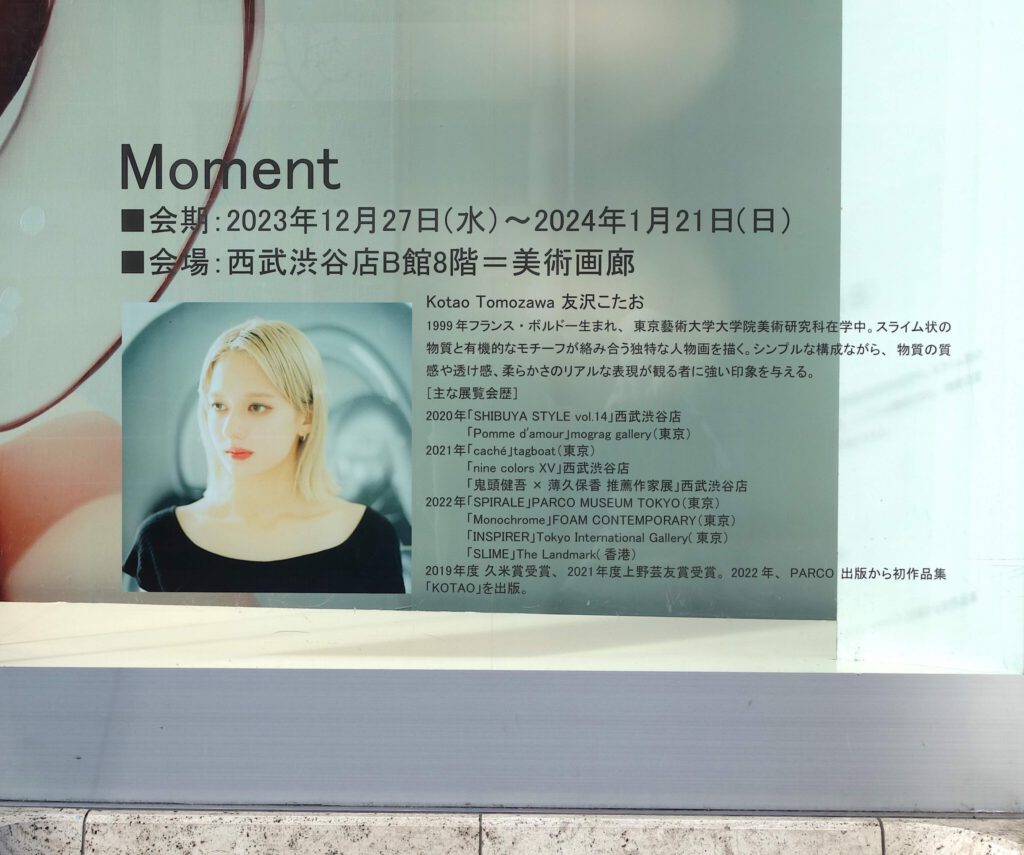

Official Press Release by SEIBU Department Store:
Kotao Tomozawa Collection Exhibition “Moment”
2023年12月27日(水)~2024年1月21日(日)
西武渋谷店 B館8階=美術画廊
東京都渋谷区宇田川町21-1
スライム状の物質と有機的なモチーフが絡み合う独特な人物画を描く友沢こたお。
彼女にとってスライムをかぶることは五感で自分の存在を再確認する行為であり、自分の本質に立ち返る行為でもある。
シンプルな構成ながら、物質の質感や透け感、柔らかさのリアルな表現が見る者に強い印象を与える友沢こたおの
西武渋谷店では初となる個展を開催します。
https://www.sogo-seibu.jp/shibuya/artmeetslife/
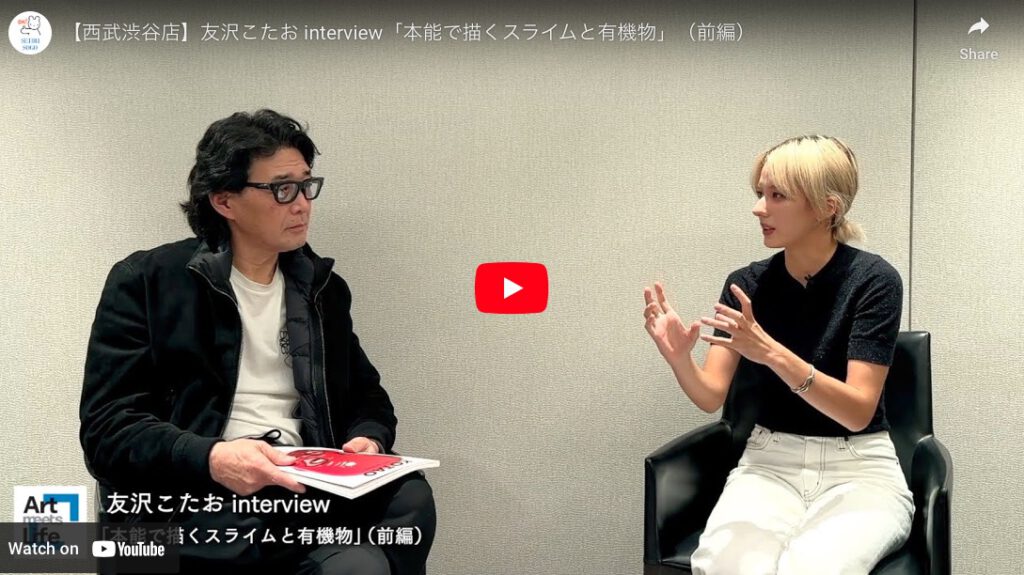
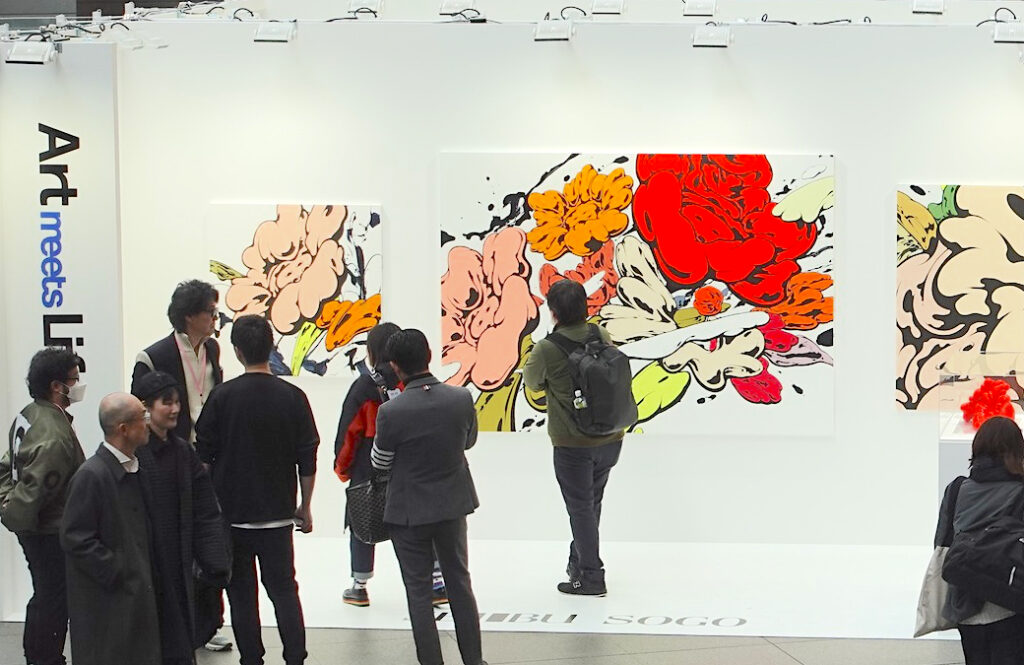


Museum of Contemporary Art, Tokyo
MOT ANNUAL Synergies, or between creation and generation 2023/12/3 〜 2024/3/3
MOTアニュアル2023 シナジー、創造と生成のあいだ
会期:2023年12月2日(土)~2024年3月3日(日)
会場:東京都現代美術館 企画展示室3Fほか
https://www.mot-art-museum.jp/exhibitions/mot-annual-2023/
English:
https://www.mot-art-museum.jp/en/exhibitions/mot-annual-2023/
友沢こたお
1999年フランス・ボルドー生まれ。スライム状の物質と人形・人間という有機的なモチーフが絡み合う独特な質感を持つ油彩を描き、在学中より受賞多数、多くの個展・グループ展で高く評価される。宇川直宏との実験音楽ユニット結成など、アンダーグラウンドカルチャーを含む多様な領域を往来しつつ活動を展開、本展では油彩含め新作を発表する。2024年春、東京藝術大学大学院美術研究科卒業予定。
Kotao Tomozawa
Born in 1999 in Bordeaux, France. Tomozawa paints oil paintings with a unique texture in which organic motifs of slime-like substances and dolls/humans are intertwined. She received numerous awards while still in school, and has been highly acclaimed in numerous solo and group exhibitions. Tomozawa has been active in a variety of fields, including underground culture, and has formed an experimental music unit with Naohiro Ukawa. She is scheduled to graduate from the Graduate School of Fine Arts, Tokyo University of the Arts in the spring of 2024.
ATTENTION! Please understand that the color of these photographs taken by me are slightly DIFFERENT from the colors of the Original Painting by Tomozawa. Appreciating your understanding regarding these extremely difficult lighting situations in diverse museum’s and gallery’s spaces.
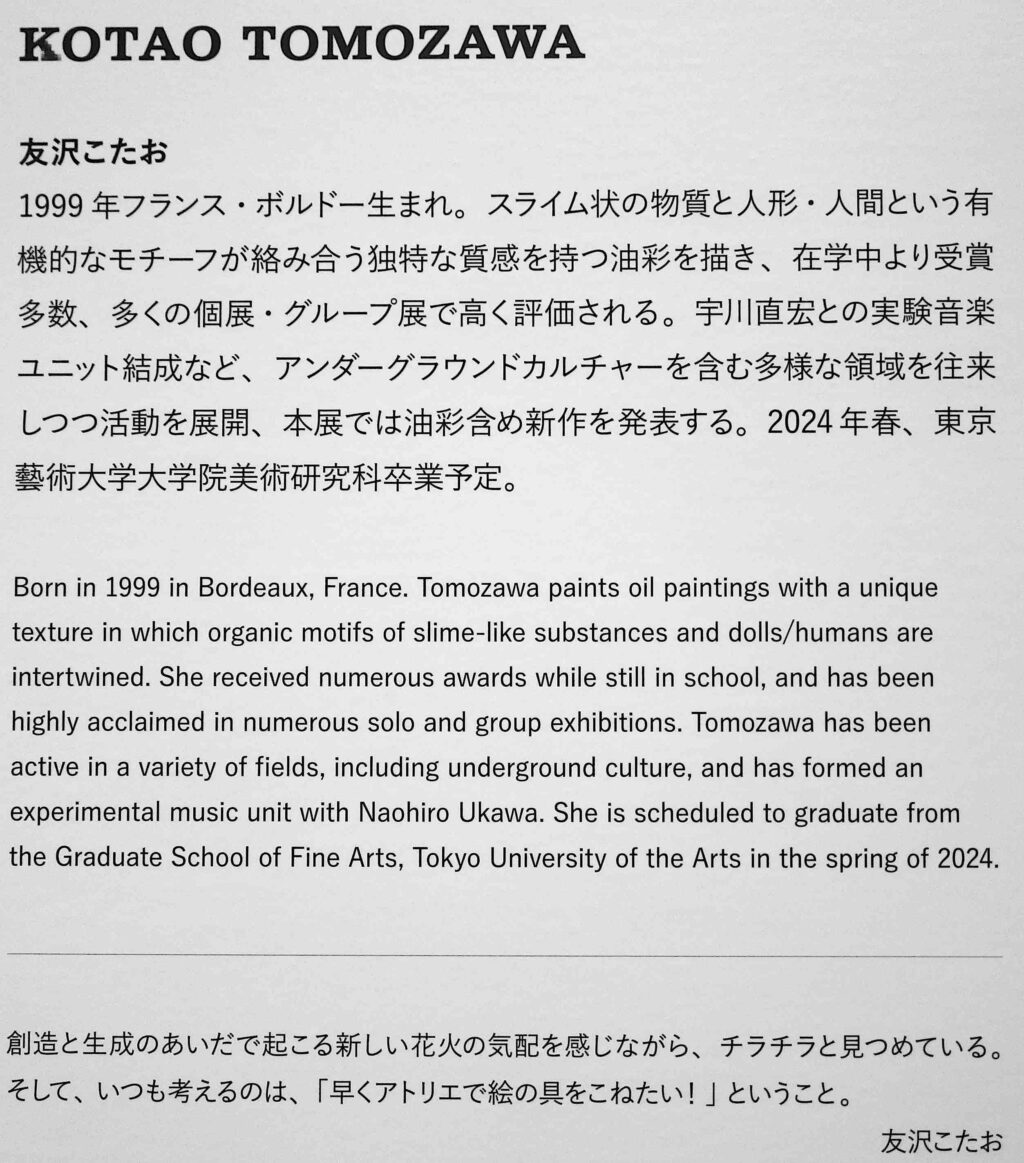
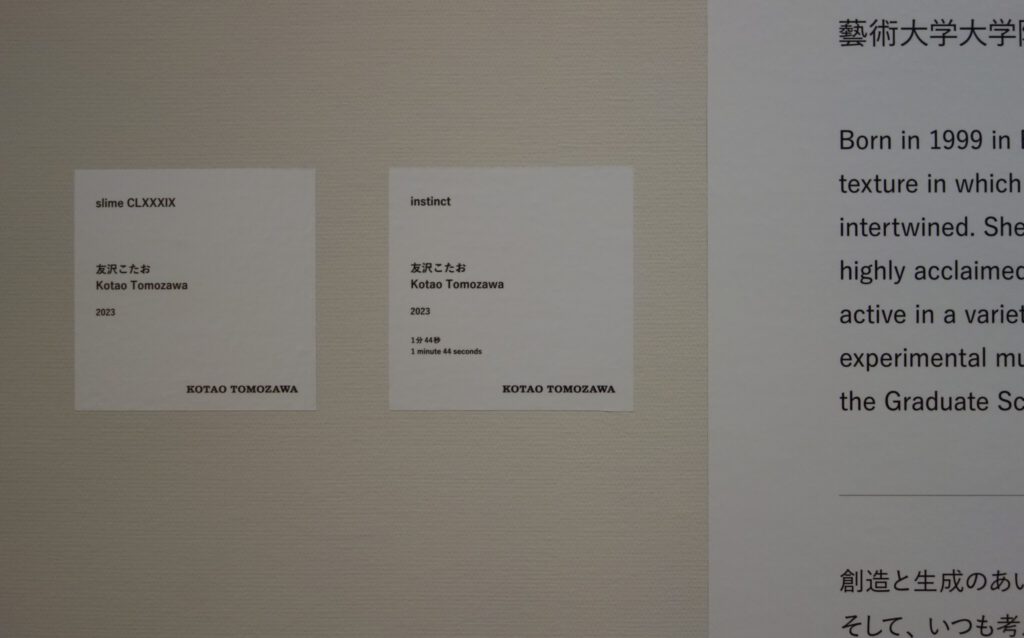

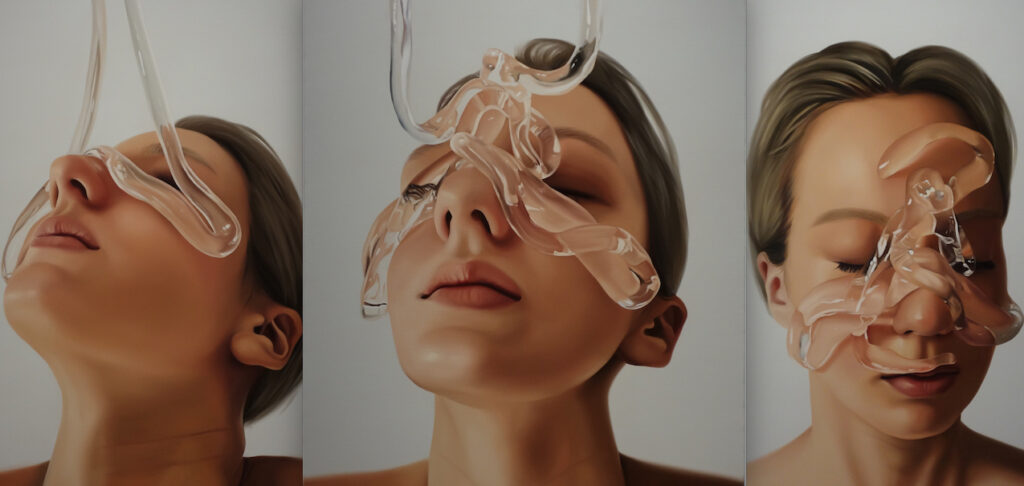


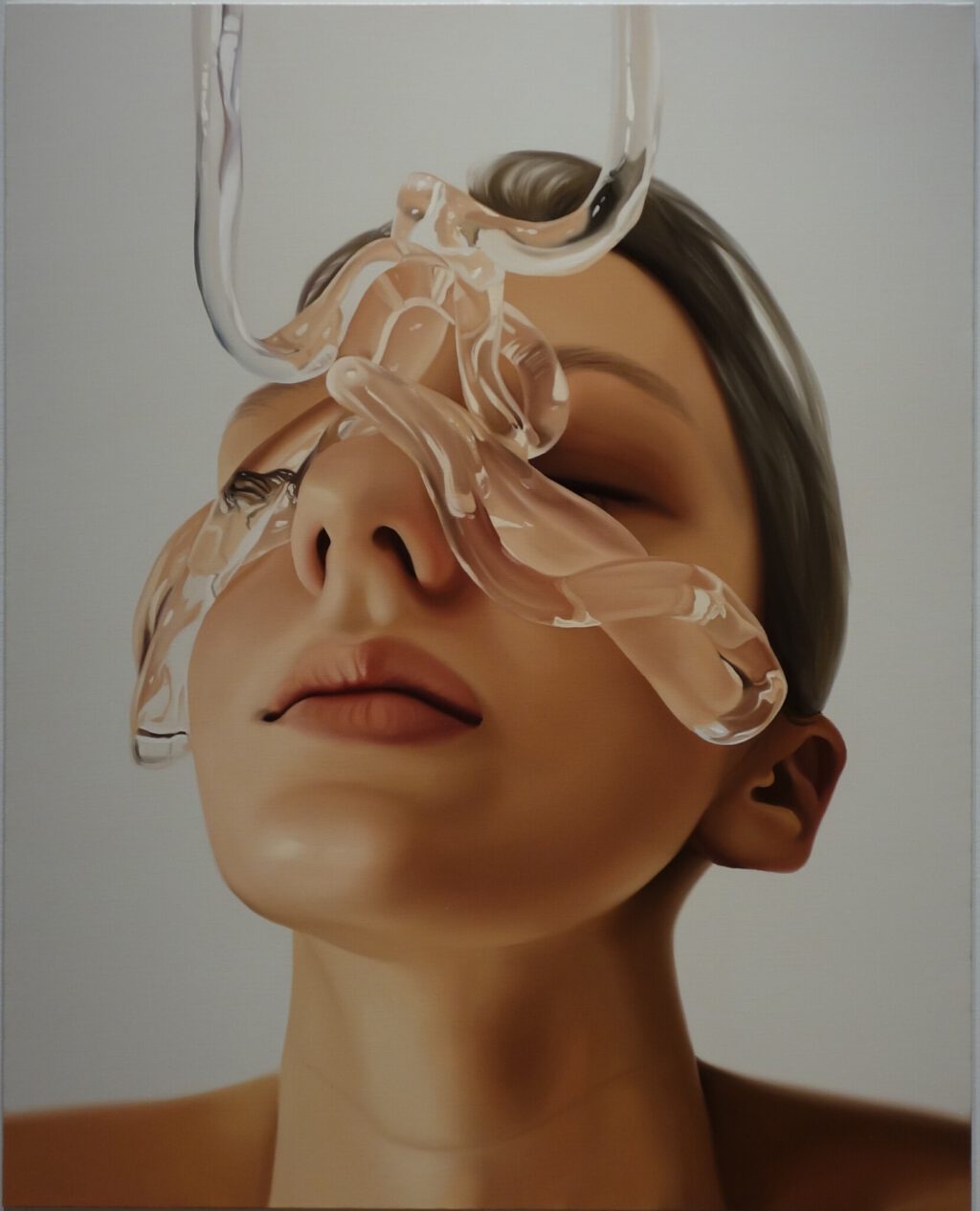

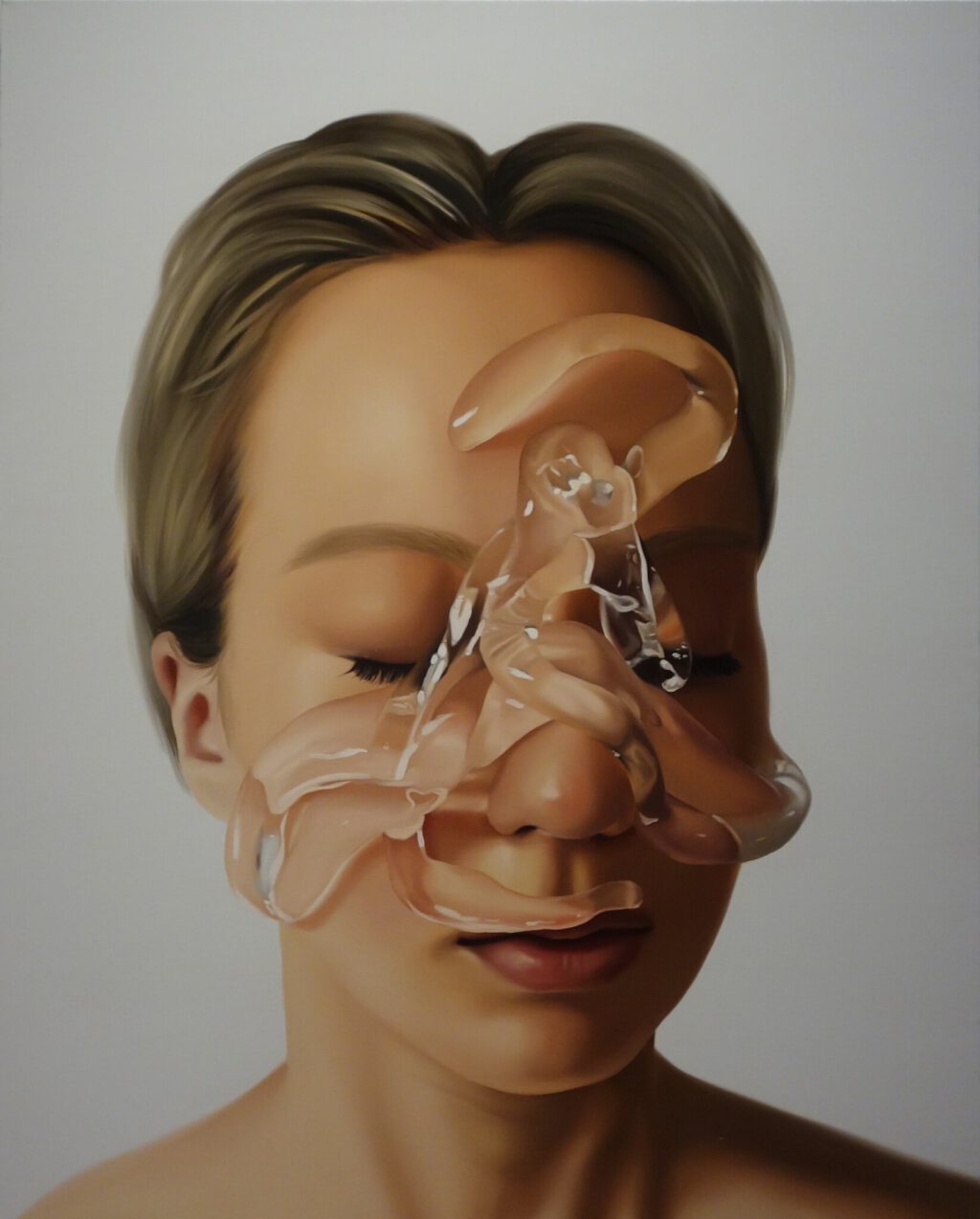


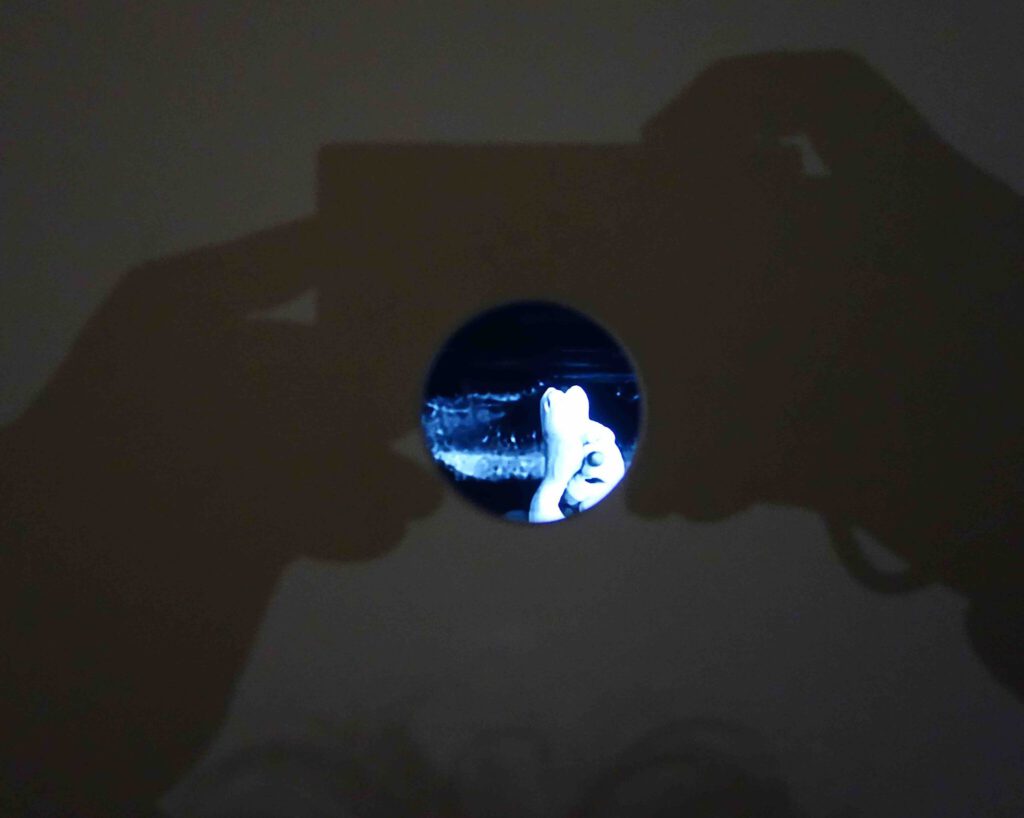
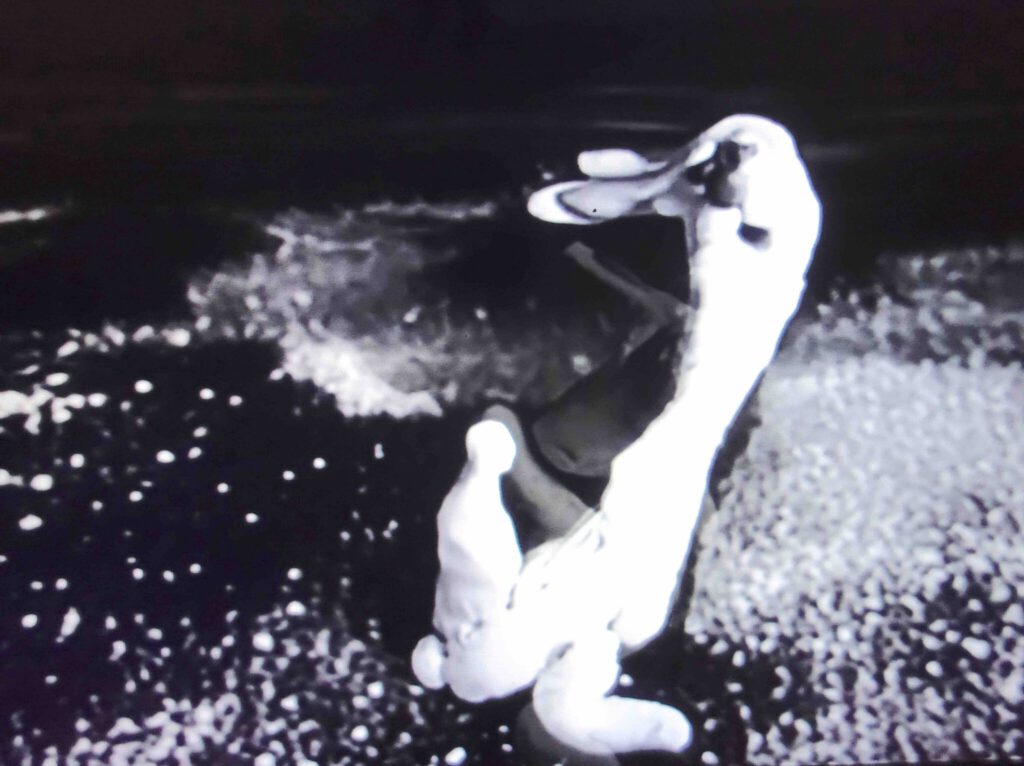
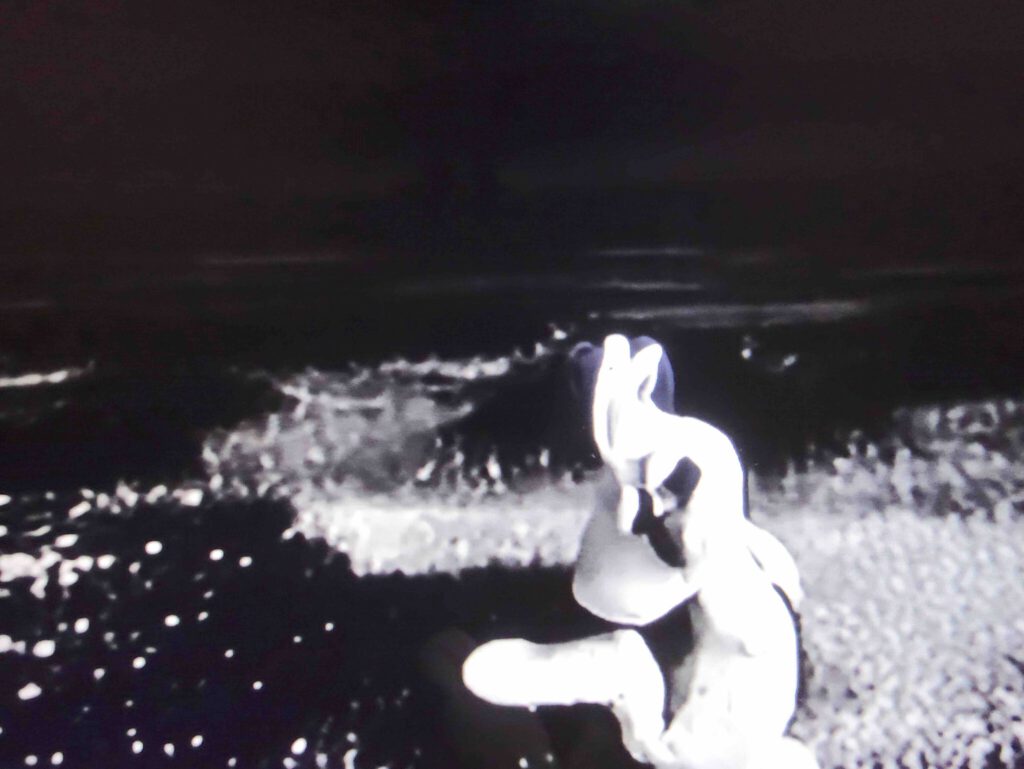
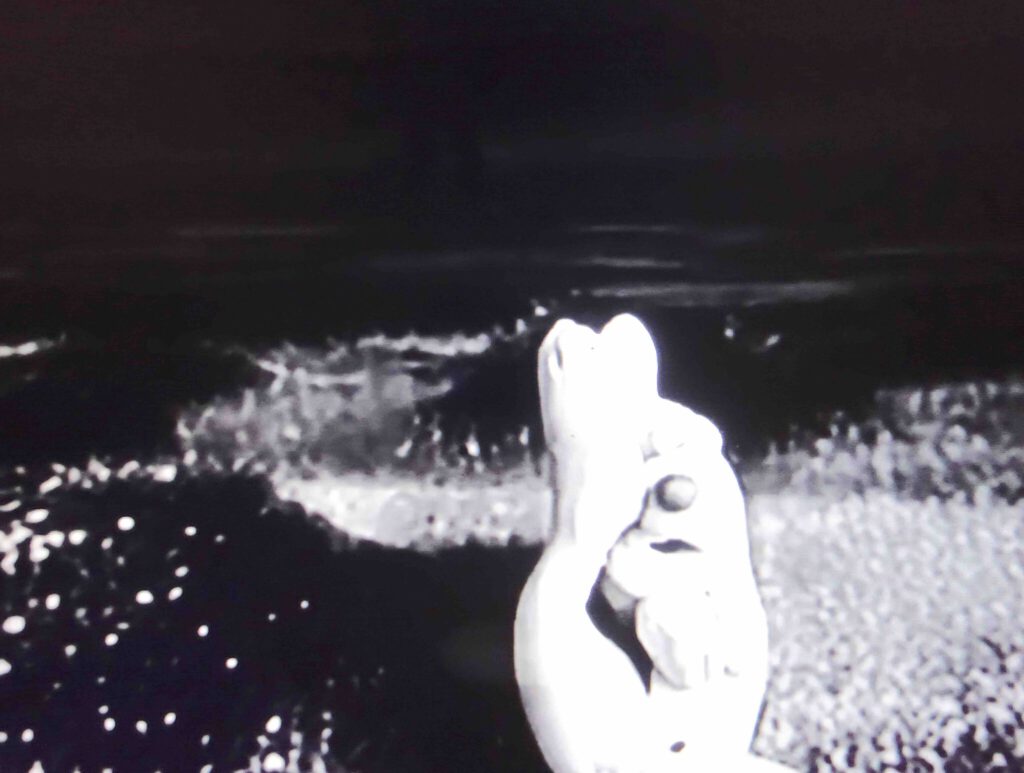
2021年
友沢こたお展 「caché」
2021年2月12日(金) ~ 2021年3月4日(木)
営業時間:11:00-19:00
*最終日は17時close、他、館の営業時間に準ずる
入場無料
会場:阪急MEN’S TOKYO タグボート
〒100-8488 東京都千代田区有楽町2-5-1 阪急MEN’S TOKYO 7F
銀座、阪急MEN’S TOKYO 7F、タグボートのギャラリースペースにて、現代アーティスト・友沢こたおによる個展「caché」を開催いたします。
友沢こたおはフランスで生まれ、現在は東京芸術大学美術学部油画専攻に在学。発表した作品がすぐさま売約となる注目の若手作家です。
スライム状の物質と有機的なモチーフを絡み合わせ、独特な人物画を描いています。その物質の質感、透け感、柔らかさがリアルに表現され、シンプルな表現ながらもインパクトを与え、一度見たら必ず印象に残る作品です。
2019年度久米賞受賞、2020年度藝大アートプラザ大賞入選するなど近年目覚ましい活躍をしています。イラストレーターの母・友沢ミミヨとの二人展「とろろ園」が話題となりました。
タグボートでは初の個展となる本展では、新作を含む油絵作品を展示・販売いたします。友沢こたお渾身の作品をどうぞご高覧ください。
【CONCEPT】
絵を描くにあたり、実際に起きていることを描くというだけのシンプルなことをしています。スライムを自分の顔や人形などにかけ、粘膜レベルで感じた自分だけの記憶と、自分の明確な意識から離れたところでおこる独特の”ぬるみ”を活かしながら絵画表現しています。
常に流動し続けるスライムの切り取られたこの1秒間というのはもう二度と帰ってこない、どこにも存在していないそのときだけの瞬間です。
cachéとは”隠された”という意味です。
我々は自分の目や意識の世界で物事を切り取って独自に形を与えてしまうけれどその1ピクセル1ピクセルには隠された神話があるとわたしは思ってます。
今回は大きい絵が多いので、包み込まれるような感覚を身体の奥底で感じていただければと思います。
友沢こたお
http://tagboat.co.jp/tomozawakorao-cache/
個展初日の2/12(金)は、混雑が予想されるため、作品ご購入を希望されるお客様のみお集まりいただき、入場順の抽選をいたします。
1Fコンコース JR有楽町側出入口(★)に、10:00~10:30の間にお集まりくださいませ。
10:30より抽選を開始いたします。抽選後、番号順に入場、接客のご対応をさせていただきます。
※作品のご購入はお1人様1点限りとさせていただきます。
※作品購入は、原則抽選を受けられ入場されたご本人様が行ってください。
※全て1点もののため、販売状況によりご希望の作品を購入できない場合がございます。
※商談成立後のキャンセル、お取り置きは不可とさせていただきます。
※作品閲覧のみを希望されるお客様は、11時の開店後に7Fタグボートヘ直接お越しくださいませ。
※混雑状況により、入場制限をさせていただく場合がございます。
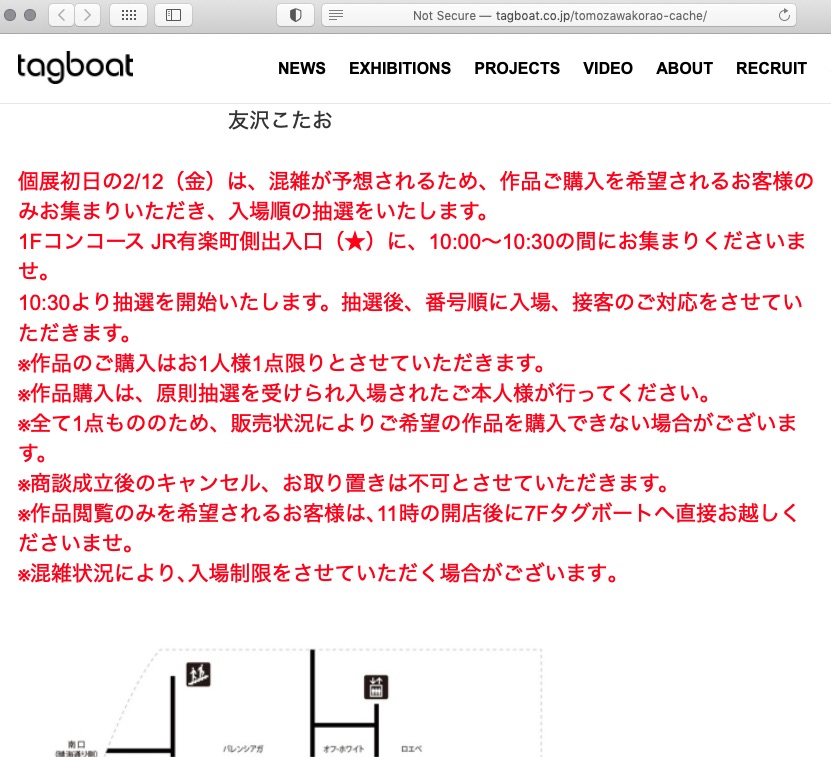
【WoW! Ho! TV】2021/5/11放送 #45 ニュージェネアート「友沢こたお」
13,608 views Jul 21, 2021
今注目すべき新進気鋭のアーティストをご紹介するコーナー「ニュージェネアート」。
初回のゲストは友沢こたおさん。スライムを用いた独自の絵の世界観はどうやって生まれたのでしょうか。バービーさんと一緒に、中野のディープな本屋さん「タコシェ」さんにもお邪魔します!
[出演者]中谷日出、小峠英二、青木悠、松城凜、森山真平(グータン)、友沢こたお、バービー
ナレーション:太田朱香

up-date 2024/3/29

up-date 2024/5/27, see also
“You cunt, I’m not a queer!”: Does MITOBE Nanae postulate a Japanese New Wave Feminism (JNWF) ?
水戸部 七絵、日本のニューウェーブ・フェミニズムを「公準」しているのか?
https://art-culture.world/articles/mitobe-nanae/
画家 友沢こたお Kotao Tomozawa BSフジ ブレイク前夜 ♯油絵 ♯スライム #アート ##現代アート #現代美術
150,879 views • May 1, 2021
【BSフジ】毎週火曜日 21時55分〜 BSフジで放送中の『 ブレイク前夜 ~次世代の芸術家たち~』は、今後世界に羽ばたく次世代アーティストを紹介する5分番組です。
画家 友沢こたお
フランス生まれ
東京芸術大学油画在籍
ガングロ牧場(andy bolusと2人展)
WAVE2019.2020 (グループ展)3331artchiyoda
シブヤスタイル(グループ展) 西武渋谷店
pomme d’amour (個展) mograg gallery
caché (個展) 阪急MEN’S TOKYO
2019年度久米桂一郎奨学金受賞
自分だけの、本当に納得する色を一色一色つくっています。二度と同じ色は作れない。スライムも1秒1秒形が変わっちゃうので切り取った画面はもう二度と会えない。そういう私だけの、今、この、という要素は大事にしています。描きながら、極限まで狭い視野でここは許せる、許せないというやりとりは理性というよりは身体的、本能的なインスピレーションで直していっています。それを繰り返していると気づいたらすっごいヌルヌルしていて、それは気持ちいいような、怖いような瞬間です。モチーフ選びにおいてはなんらかのぬるい”正しさ”のようなものを自分なりにぶちこわし、ノイズを発生させています。綺麗なものを綺麗に描くのは興味がなくて、ぐっちゃぐちゃのものの方が安心します。でもわたしはぐちゃぐちゃ汚いだけの絵は描きたくなくて、絵を描くにあたっては自分なりの美に引き込んでいきたさがあり、その駆け引きが楽しいからわざわざ写真ではなくて絵画を描いています。(本人談)
当番組はギャラリスト・美術情報誌・コレクター・美術館関係者・学芸員・アートディレクター・デザイナー等、あらゆる分野で活躍している方々の推薦によりアーティストを紹介いたします。
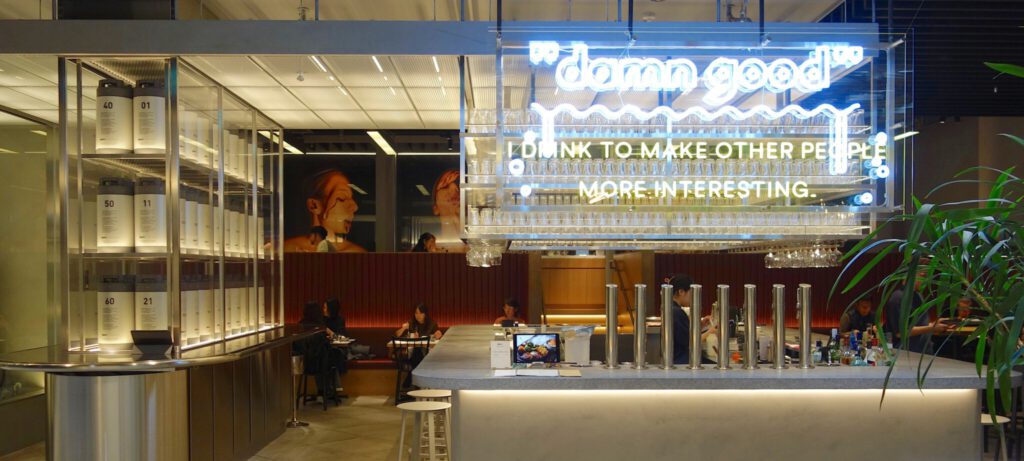
up-date 2024/4/4:
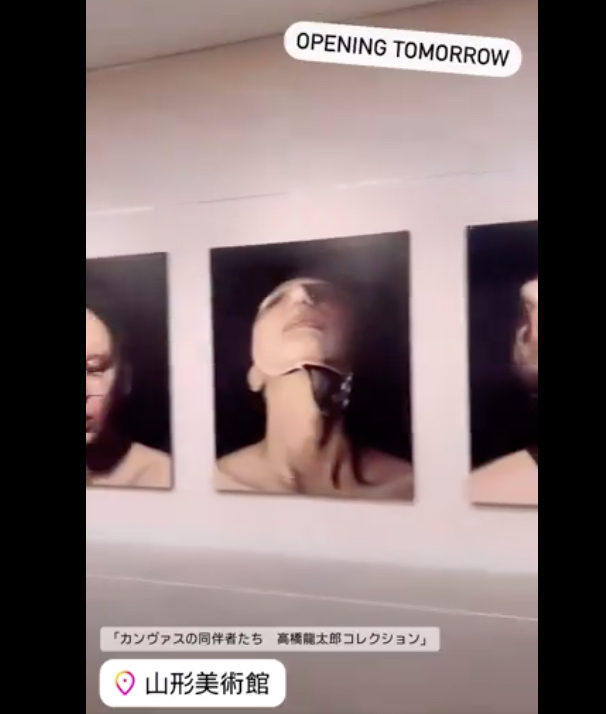
up-date 2024/4/19:

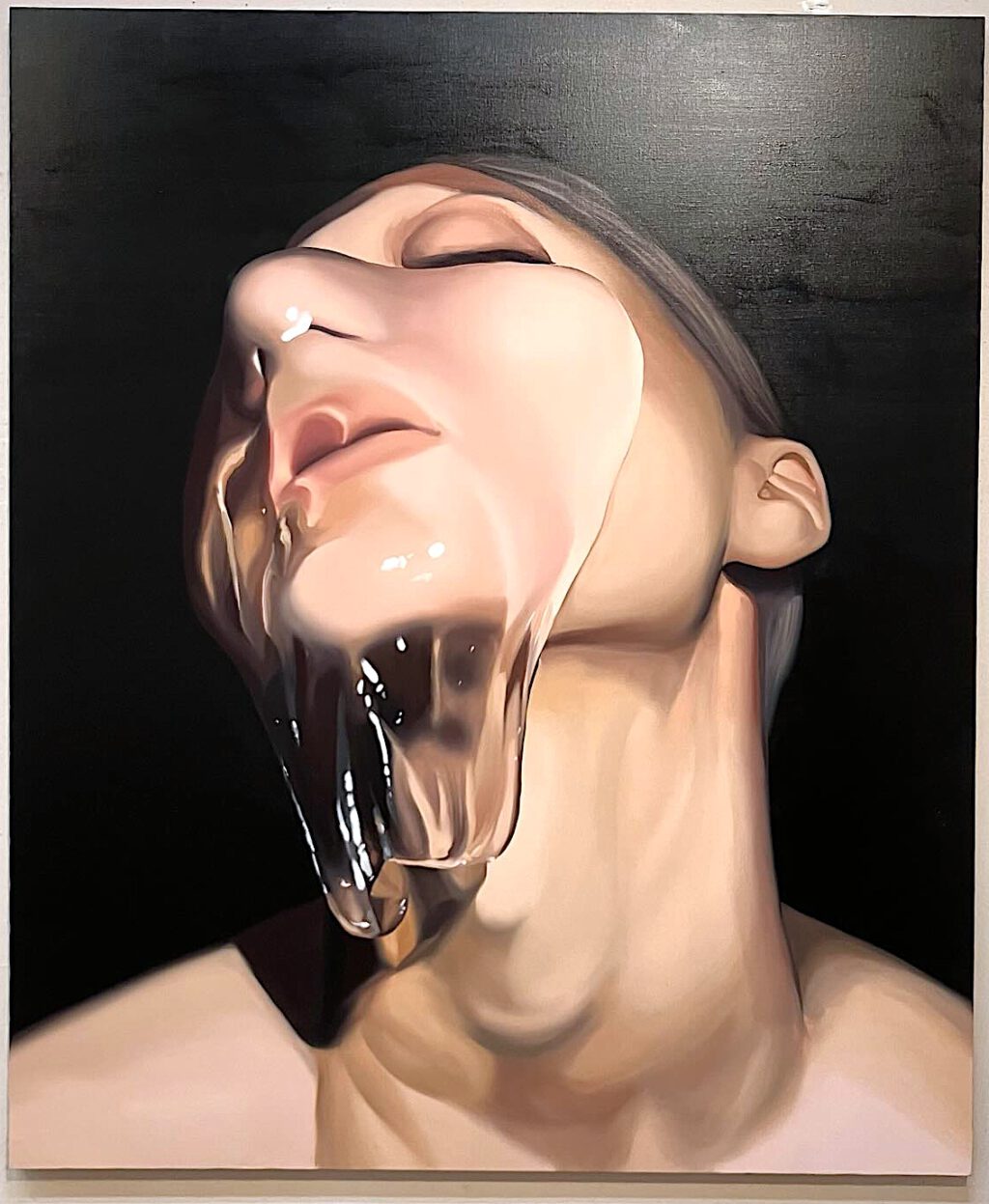
カンヴァスの同伴者たち 高橋龍太郎コレクション
Fellow Travelers of the Canvas
A Perspective on Contemporary Art of Japan
from the Takahashi Ryutaro Collection
山形美術館では、「カンヴァスの同伴者たち 高橋龍太郎コレクション」を開催します。山形県鶴岡市に生まれた精神科医の高橋龍太郎氏は、1990年代より日本の若手作家を中心に現代美術のコレクションを本格的に開始します。新たな作家の発掘や作品の再評価を精力的に行ない、3,000点を超えるそのコレクションは、日本を代表する現代美術コレクションとして知られています。本展では、高橋龍太郎氏のコレクションのルーツとなる作品をはじめ、2000年以降の社会を反映するように拡張しつづける日本の現代美術の現在(いま)を約70点で紹介します。
「カンヴァスの同伴者たち」というタイトルには、アーティスト、コレクター、キュレーター、そしてわたしたちすべてがアートの同伴者であるという高橋氏の思いが込められています。またそれは同時代の美術を射る高橋龍太郎氏の姿そのものといえるでしょう。1964年に開館した山形美術館は、地域に根ざす美術館活動を重ね、本年で60年を迎えます。時代を写し、わたしたちとともにあるアートとの出会いを、山形でお楽しみください。
【展示構成と出品作家】
「高橋龍太郎コレクションのルーツ」
草間彌生、合田佐和子、奈良美智、村上隆、会田誠、山口晃、池田学
「象をうつす」
大谷有花、武田鉄平、衣川明子、谷保玲奈、川内理香子、佐藤未希、友沢こたお
「キャラクターイメージの遍(偏)在」
梅沢和木、小林健太、浦川大志、名もなき実昌
「余白をみる 書、カリグラフィ、グラフィティ」
井上有一、操上和美、李禹煥、関根伸夫、華雪、鈴木ヒラク、村山悟郎、大山エンリコイサム、やんツー、BIEN
「ヴァナキュラー 東北から生まれる」
鴻池朋子、金子富之、志賀理江子、土井沙織、近藤亜樹、久松知子
「メディウムと色、形」
春木麻衣子、今井俊介、青木豊、水戸部七絵
「絵画と陶 拡張するアート」
岡﨑乾二郎、奈良美智、見附正康、桑田卓郎、西ノ宮佳代、梅津庸一、川井雄仁、松下徹、坂本紬野子
http://www.yamagata-art-museum.or.jp/exhibition/5329.html
up-date
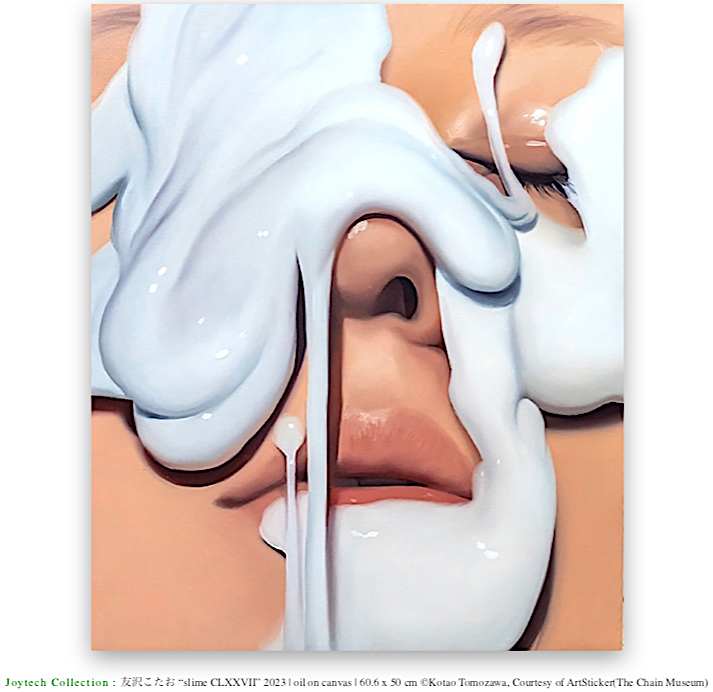
「Revealed – 3人の個人コレクション– 」(Revealed 3 Private Collections)
Joytech Collection・照井コレクション・G foundation Collection
横浜市民ギャラリーあざみ野 YOKOHAMA CIVIC ART GALLERY AZAMINO
24th of April 〜 5th of May 2024
https://artazamino.jp/event/post-10955
主催:現代アートPrivate Collection実行委員会
共催:横浜市民ギャラリーあざみ野(公益財団法人横浜市芸術文化振興財団)
3つのプライベート・コレクション合同による現代美術展。約100点。
三つの個人コレクション、「Joytech Collection」「照井コレクション」「G Foundation Collection」の所蔵品を紹介。いずれも、パブリック・コレクションと呼ばれる美術館などの公的機関によるコレクションとは対極的に、他者に阿ることのない独人的感性によって形成されてきた現代美術コレクションです。個人蒐集家・コレクターと呼ばれるようなささやかで趣味的な収集活動から始まり、およそ15~20年にわたって粛々と集められたコレクションは、現在までにそれぞれ数百点に至っており小規模な公的コレクションにも迫ります。三者が文字通り心血を注いで集めてきたコレクションは、アカデミスムでもなく、承認欲求でもなく、歴史的価値でもなく、資産的価値でもなく、ただ一個の作品の力が一人の人間の心を突き動かしたという圧倒的なリアリティの蓄積です。それらを一堂に会することで、公的な美術史には未だ記述されていない極めて同時代的かつアクチュアルな日本現代美術がそこに現れてくるはずです。
https://www.instagram.com/contemporary.privatecollection/
Joytech Collection
Joytech Co., Ltd. 代表取締役山口英雄によるコレクション。奈良美智の作品購入をきっかけとして 2005 年より現在までにおよそ400点の作品を収集、多 くの現代アーティストとも交流。近年は瀬戸内国際芸術祭や PROJECT ATAMI に協賛するなど、アート普及のための支援活動にも取り組む。同館において2006 年にもコレクション 展 (奈良美智、Andy Warhol) を開催しており、本展は二度目の機会となる。
■展示作家:淺井祐介、東弘一郎、石田恵嗣、浦川大志、上野裕二郎、海老原靖、大野修、岡田佑里奈、金氏徹平、興梠優護、小杉慈樹、後藤夢乃、佐藤雅治、塩田千春、杉原玲那、鈴木ヒラク、髙橋恭司、多田圭佑、友沢こたお、仲衿香、長島伊織、名和晃平、藤森哲、本城直季、松浦美桜香、森村泰昌、山中雪乃、山ノ内陽介、ユアサエボシ、横山奈美、Elena Tutatchikova、Jadé Fadojutimi、Wolfgang Tillmans
照井コレクション
コレクター照井信三氏 ( 建築家でもある ) によって約 20 年にわたって形成されてきたコレクション。独自に情報を集め、関心を持てば自らの足と目で確かめながら いち早く若い才能を見出してきた。自身の感性に共感する作品のみを集め続けた結果、個人コレクションとしての極めて強いテイストがある。
■展示作家:有賀慎吾、飯田美穂、磯村暖、猪瀬光、岩崎奏波、スクリプカリウ落合安奈、小津航、水上愛美、三宅玄朗、辻響己、都築響一、土肥美穂、早川祐太、樋口明宏、堀聖史、山田康平、ユアサエボシ、Ahmed Mannan
G foundation Collection
創設者の大石氏により2008年から収集された900点以上の作品からなる。2021年より財団化、G foundation を設立。今後は本格的にパブリック・ コレクションとしての活動へシフトしていくにあたって、本展が最初の一般公開となる。国内外数箇所にコレクション施設の展開を計画中。
G foundation collection is public art collection established in 2021 by founder Mr.Tetsuyuki Oishi. More than 700 works have been collected since 2008.
The name, “G” is taken from Group Theory in mathematics. Also “G” means the base point in the finite fields in cryptography.
https://gfoundation.info
https://tagboat.tokyo/artcollector/大石哲之
■展示作家:伊勢克也、植村佳乃子、浦川大志、榎倉康二、大竹伸朗、木村翔馬、工藤麻紀子、佐藤翠、佐藤玲、菅木志雄、髙橋恭司、長井朋子、名もなき実昌、二艘木洋行、原口典之、藤幡正樹、風能奈々、松本陽子、山田周平、山本和真、吉澤美香、Alex Dodge、Elena Tutatchikova、Lee Kit、ob、John Yuyi
Artist Tomozawa Kotao on what drives her to paint
Japan House London
852 views • Jul 7, 2023
Hyperrealist artist Tomozawa Kotao, who is featured in Japan House London’s ‘WAVE’ exhibition, talks about using painting to tackle emotions, how the creative process unburdens her, and making her own slime for her works.
With thanks to Japan House Sao Paolo who created this video.
The exhibition ‘WAVE: Currents in Japanese Graphic Arts’ runs at Japan House London until 22 October 2023. https://bit.ly/46EhlFm
——
From HYPEBEAST: (Creative Commons Attribution Noncommercial-NoDerivative Works)
For Kotao Tomozawa, “SLIME” Is Both a Mask and a Medium That Reverts Her Back to a Blank Slate
At her first solo exhibition in Hong Kong, Kotao details how her adolescence and idol-experience shaped her artistic vision.
Zoe Leung
AllRightsReserved’s latest “MEET_PROJECT” introduces Kotao Tomozawa, an up-and-coming Japanese artist that garnered attention for her hyper-realistic yet playfully unsettling paintings where her subjects are always masked in a slimy substance.
Going by Kotao, the Gen Z artist presented “SLIME,” her first solo exhibition in Hong Kong last week. Nestled inside a contemporary space at the city’s bustling LANDMARK mall, the exhibition showcases a brand new set of Kotao’s large-scale oil paintings. In addition, her first-ever bronze sculpture was also unveiled and was briefly offered as a limited-edition via DDTStore.
Before the exhibition opening, Hypebeast spoke with Kotao about what shaped her as an artist today, as well as the messages behind her eerily captivating creations.
(Question) “SLIME” seems like such a fitting name for your exhibition, especially since there’s always an element of slime/sliminess present in your artwork. How did this style come about?
(Answer) I felt lost when I first enrolled at the Tokyo University of the Arts. I felt like I had already exhausted all my ideas just to get in, and I didn’t know which direction to experiment or how to push my ideas. One time, I was playing with a piece of slime and decided to place it all over my body. The sensations from that felt very raw and real. That’s when I decided to build my style around slimes, which I’m still experimenting with even today.
(Q) Many of your paintings appear to be self-portraits, but you also often depict baby dolls in your art. What’s the meaning behind the baby dolls? Does the message it carries differ from your self-portraits?
(A) I always start with self-portraits, as it’s a direct yet intimate way to express myself. To me, babies represent a blank slate — it’s pure, and it symbolizes the starting point. When I was little, I had this baby doll called Ruki Chan, who was more like an imaginary friend that I hold very dear. I first thought of incorporating Ruki Chan into my art while I was in university, and the effect felt very similar to my self-portraits – it felt compelling and very intimate. That’s how I started to focus on these two subjects in my artwork.
Have you always been interested in art? Was there a pivotal moment when you realized that this is what you wanted to pursue?
My mother used to work as a comic artist, and she’d draw all the time at home. Seeing her artwork and being surrounded by drawings always felt very natural to me, like taking a bath or eating dinner. I guess I never really thought about being an artist as a career. I have this determination that if I work hard enough, and do the best I can, anything is possible.
What kind of influences does your mother’s artwork have on you?
My mother, Mimiyo Tomozawa, is kind of a crazy mom. Her art style and themes are intense, unusual, and avant-garde. But at the same time, it’s pretty underground and also very adult. I wasn’t allowed to read her work as a child, but as I got older, I started to read her creations bit by bit. I really look up to her and her works.
You mentioned that you’ve dabbled in the entertainment industry before. How do you think the experience has shaped you as an artist today?
I debuted as an idol back when I was still in high school. It’s quite strange really, because the decision stems from my fear and mesmerization for charismatic people. I have a fear of appearing in public, and I wanted to confront that weakness. I’m glad I was able to face it so bravely, but that’s also when I realized I didn’t like hiding behind the idol facade and not being able to express my authentic self.
An idol’s work schedule is always packed, that’s a given. Back then, I was both physically and emotionally exhausted. It feels like no one really understood me, and I felt lonely. I started drawing really dark pictures then, and that’s when I finally felt that I was expressing parts of my real self. Whenever I place a piece of slime on my body, it feels like I’m being reverted back to a blank slate. It’s cathartic.
Do you consider the element of slime as something that separates, or even protects you from the things you’re scared of in real life?
Yes, that’s right. I noticed that when I was working as an idol, I was particularly fascinated by the innate cruelty, ferocity, and terror in human nature. But it also made me question the world around me, after all, I was only a high schooler then. I was afraid of social media as well. My job was to be seen and remain in the public’s attention as much as possible. To keep up with that, I started to lie on social media, and these lies kept escalating. I needed something to help me bring back my true self, and slimes happened to be that one thing.
What are some of your main sources of inspiration?
In terms of painters, I love Francis Bacon’s surrealist and raw aesthetics, as well as the distinctive yet strong colors in his paintings. It’s not something I can describe with words, but his artworks have the ability to send shocks to my skin. My goal is to be able to create impactful artwork just like his.
I’m also really fascinated by professional wrestlers like Jun Kasai. He’s known for his hardcore and violent wrestling style. His head is almost always covered in blood, and bloody visuals as such are pretty impactful to me. I also draw inspiration from niche films, manga, and book, such as Kazuichi Hanawa‘s bizarre, macabre art style, and satirical mockumentaries like Kazuo Hara’s The Emperor’s Naked Army Marches On.
Do you remember the first piece of artwork you created? How do you think your art has evolved since?
I guess that’ll be the pieces I produced during my time as an idol. One of those depicted a scenery of ectoplasm oozing from a pair of boots. After a while, I tried oil painting for the first time and I was surprised at how different my drawings are when using a completely different medium. Those also gave me the feeling they were spawned from my desire to express myself.
At the time, I was focused on drawing things from my head, and not things that I see physically. Somehow, I started to study faces and become fascinated with all the nuances in human expressions. Recalling my adolescence, my doodles almost always featured faces. I guess I was never interested in landscapes or still life to begin with.
What is a typical day in your life like?
I tend to segregate my daily life from art. This is because whenever I start drawing or painting, I simply don’t want to stop until the piece is complete. I’ll be so concentrated that I’ll forget to eat, sleep, and even bathe. But when I’m not creating art, I’ll go out and have fun to the fullest. I’d repeatedly ride a roller coaster until I felt sick, or go to a sauna all day to relax.
Time really does fly when you’re in absolute concentration.
I lose track of time completely when I’m in the zone. It’ll feel like an hour or so to me, but in fact, a whole day has already passed.
Do you foresee yourself taking the idea of “SLIME” into other forms of creative disciplines in the future?
I want to elevate my creations with movements. Sizing up my paintings was also intentional. My face is only about this small, but on canvas, it’s at least a few times bigger. When I draw on such large scale canvases, I can really study and focus on every little detail. I’m amazed with how this three-dimensional Ruki Chan sculpture turned out. I wish I could make it even bigger, full-bodied, and with limbs that are moveable.
I also experimented with a new style for this exhibition. You’ll see that there are pieces where the slime takes on a more complex and aggressive form. For these, the slime appears to be moving constantly, and it gradually smothers the subjects.
What advice would you give to aspiring artists?
Honestly, I still have a long way to go, but I think keeping a pure heart is key. It’s really important to stay true to yourself while also learning ways to express it through your creations. It doesn’t matter how insignificant the message in your art is. If it comes from an authentic place, somebody out there will be moved by it.
Kotao Tomozawa’s “SLIME” will remain on view at LANDMARK, Hong Kong until July 30, 2023.
LANDMARK
Shop 116, 1/F, LANDMARK,
15 Queen’s Road Central,
Central, Hong Kong
in case the youtube video disappears: screenshot as archival pic

Up-date:
Auction NEW 006 27 April 2024
VENUE:
SAI
30800 3F Miyashita Park South 6-20-10 Jingumae Shibuya-ku Tokyo 150-0001
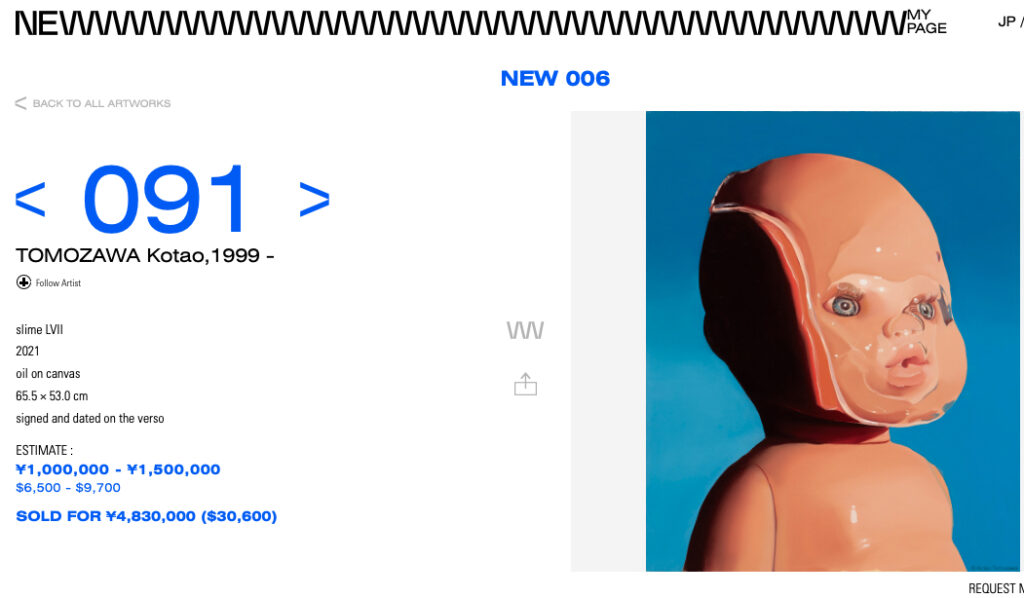

Artist:
Kotao Tomozawa (Japanese, born 1999)
Title:
slime LVII, 2021
Medium:
oil on canvas
Size:
65.5 x 53 cm. (25.8 x 20.9 in.)
Sale:
NEW 006, Saturday, April 27, 2024,
Lot 91
Estimate:
Est. 1,000,000–1,500,000 JPY
(6,468–9,701 USD)
Sold for 4,830,000 JPY
(30,600 USD)
Certificate of Authenticity by Jinen Gallery
Exhibitions:
“Tomozawa Kotao Solo Exhibition”, April 6 – 18, 2021, Jinen Gallery, Tokyo
Literature:
“KOTAO”, PARCO Publishing, 2022, no. 66
https://newwwauction.com/en/catalog/detail/2024042701/91/
(end of up-date)
as a reference:



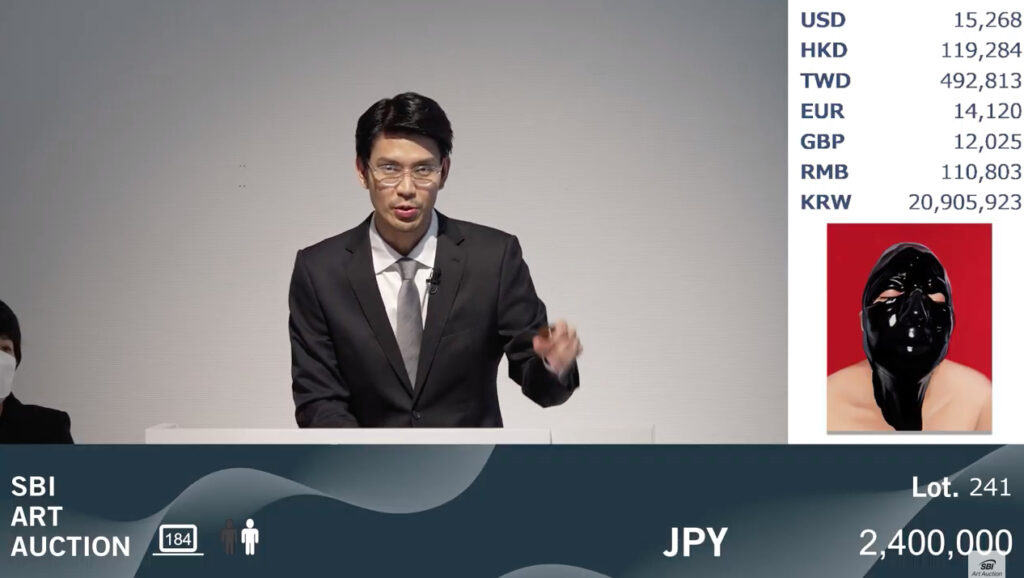
https://www.sbiartauction.co.jp/en/auction/detail/123/241
Compare with LOT 240. TOMOZAWA Kotao “slime XLIX” 2021
Estimate 2.000.000 – 3.000.000 Yen. Hammered @ 7.500.000 Yen; incl. fee = 8.625.000 Yen
https://www.sbiartauction.co.jp/results/detail/123/240
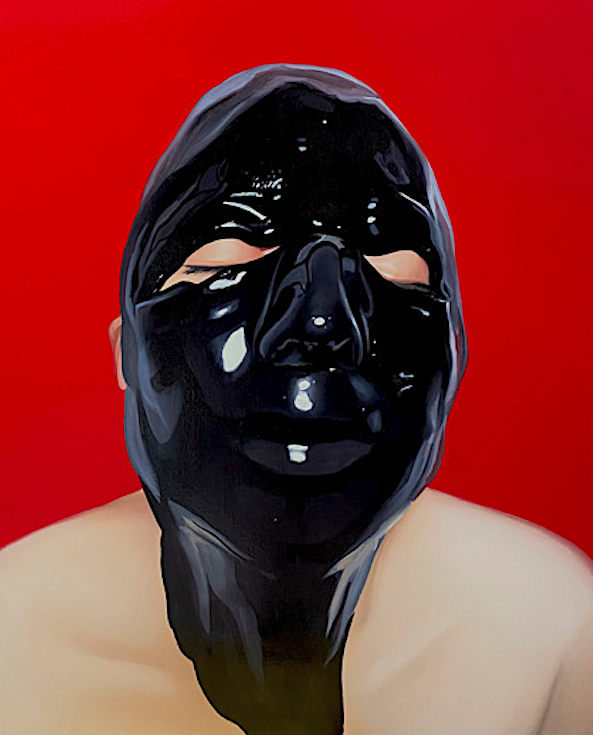
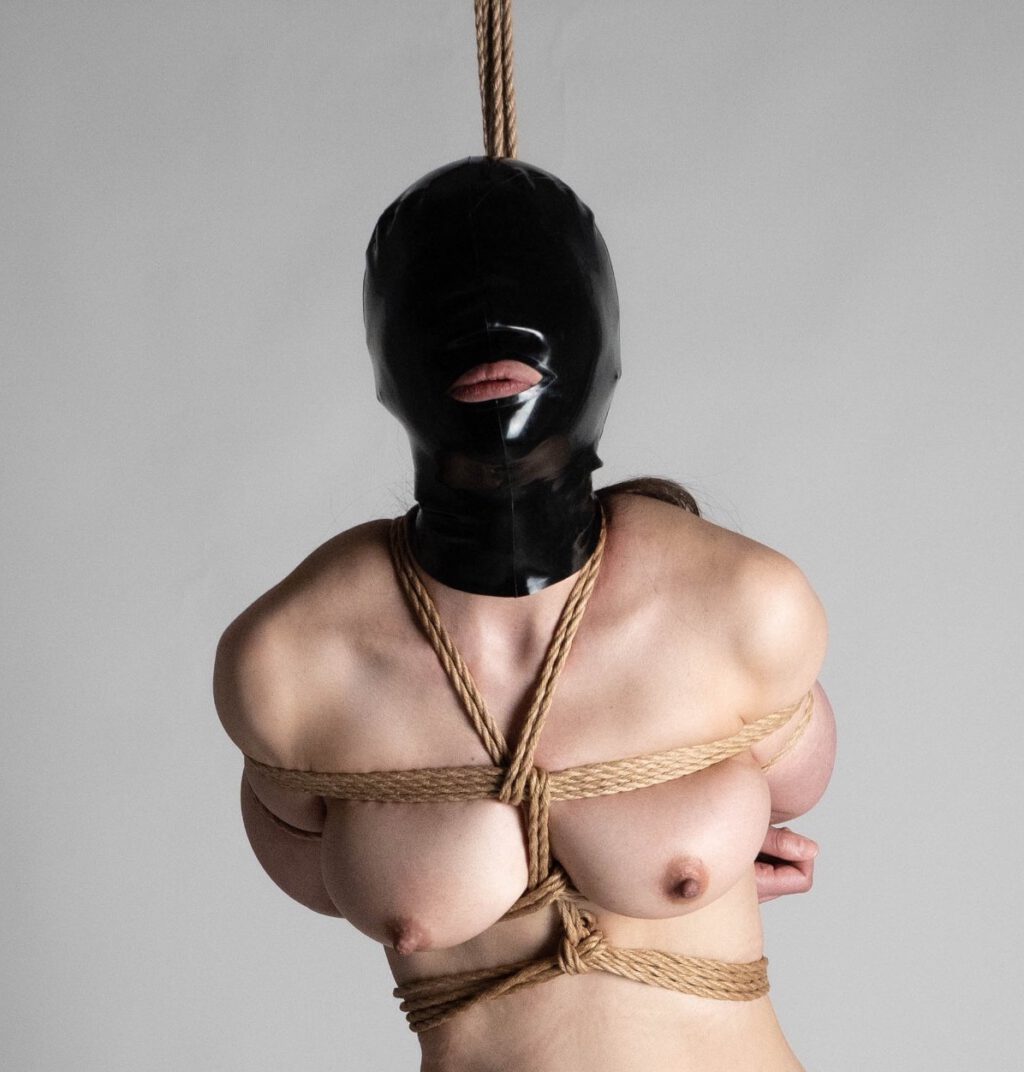

Link_https://www.instagram.com/sunnyes_inc/
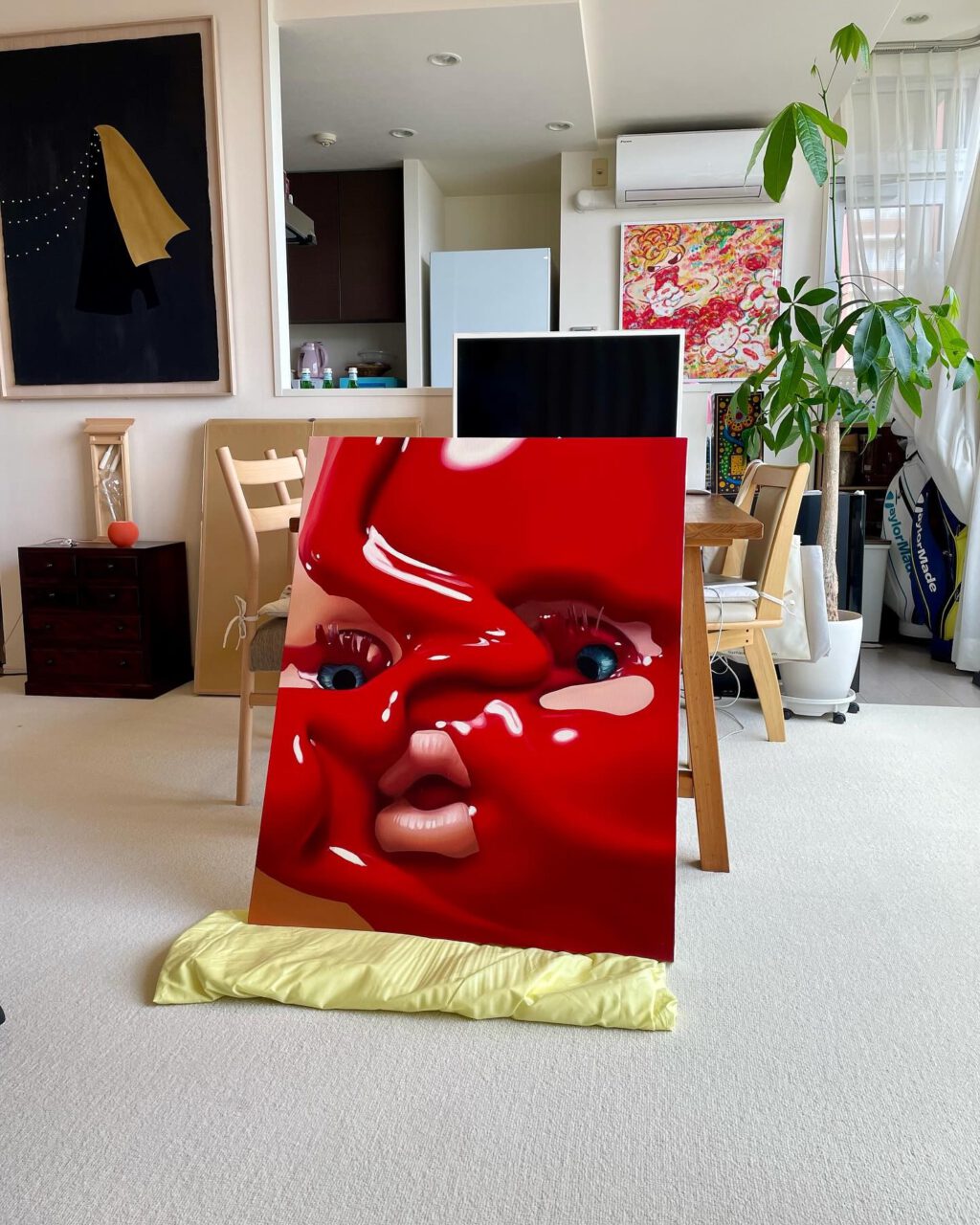

Link_https://www.instagram.com/p/CzGz5BFSsf_/?img_index=7
ここに載せた写真、スクリーンショットやテクストは、すべて「好意によりクリエーティブ・コモン・センス」の文脈で、日本美術史の記録の為に発表致します。
Creative Commons Attribution Noncommercial-NoDerivative Works
photos: cccs courtesy creative common sense

